
In-Depth McDonald’s Marketing Case Study – I’m Lovin’ It Already.
By Aditya Shastri
McDonald’s has been one of the leading food chains for many years in terms of the quick-service segment. They are a company with a broad understanding of the needs of its customers.
Today, McDonald’s is the industry’s leader not only in sales volumes but also in profit rates and market valuation. But how did they manage to gain such a strong position? The answer lies in its well-thought-out strategic marketing moves as well as other internal factors.
That’s why in this case study, we’ll dig deeper into McDonald’s Marketing Strategy in India and globally from a marketing perspective by going through its marketing strategies, marketing mix, marketing campaigns, and SWOT analysis.
So let us start by first learning more about the business model and brand history of McDonald’s.
About McDonald’s
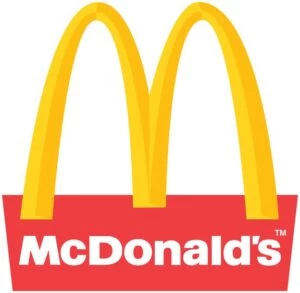
McDonald’s Corporation, or simply McDonald’s, is the world’s largest chain of fast-food restaurants, serving around 69 million customers per day. Headquartered in the United States, the company began in 1940 as a restaurant operated by Richard and Maurice McDonald.
In 1948, they reorganized their business as a hamburger stand but later in 1955, businessman Ray Kroc joined the company as a franchise agent who subsequently purchased the chain from the McDonald brothers and oversaw its worldwide growth.
The mission of the company is, “To create delicious feel-good moments for everyone” .
McDonald’s offers its customers a wide variety of its menu items, along with drinks and other merchandise. It is known for its employee satisfaction, innovation, and commitment to quality.
The business model of McDonald’s is intensive, but in short, it is a franchise-based model. It shares the rights of the business with its franchise partners who later operate McDonald’s in select regions.
In India, McDonald’s is run by two companies, Hardcastle Restaurants Pvt. Ltd (controls South & West India) and Connaught Plaza Restaurants Private Limited (controls North & East India). It first entered India back in 1996.
Now that we know about McDonald’s Corporation and McDonald’s India. Let us now go through the company in greater detail by going through its marketing mix.
What’s new with McDonalds?
Here’s everything that was buzzing around McDonalds recently:
- McD introduced the new “KARTIK AARYAN Meal” inspired by the actor’s personality. We will discuss this in detail below in the marketing strategies.
- McDonalds in India dropped tomatoes in August of 2023 because of rising prices.
- Mcdonald’s giving away free NFTs in Singapore. Details in this news article by Decrypt .
- In July 2023, McDonald’s announced that they are coming up with a new concept called CosMc – a spinoff restaurant.
- McDonald’s opened their first fully automated restaurant in Texas.
Sounds like McDonald’s was quite the talk of the town all this year and rightfully so. Let’s now move on and discuss the buyer persona of McDonalds.
Buyer Persona of McDonald’s
A buyer persona generally refers to the detailed information of an ideal customer of a company. When it comes to Mcdonald’s, people from all countries, ages, and genders enjoy their juicy burgers and fries. Hence, we have focused on the attributes of an ideal buyer at Mcdonald’s.

Buyer’s Persona
Profession:
Graphic Designer
- Seeks quick, convenient meals
- Values cost-effectiveness
- Enjoys variety and occasional indulgences
- Prefers shareable food options
Interest & Hobbies
- Digital Art & Design
- Socializing with friends
- Watching movies and TV series
- Exploring new cafes and restaurants
Pain Points
- Time-strapped due to work
- Dislikes long wait times
- Concerned about food consistency
- Health-conscious
- Prefers a quieter ambiance
Social Media Presence
Marketing mix of mcdonald’s.
A marketing mix is a model that an organization uses to advance its interest in its image or product. The main components of this model are the 4Ps: Product, Price, Place and Promotion. So let us look at McDonald’s marketing mix strategy in the coming section.
We have written a separate blog taking a deeper dive into the marketing mix of McDonald’s if you wish to learn more.
Product Strategy of McDonald’s
Being a fast-food company, it primarily sells burgers, french fries, breakfast items, soft drinks, milkshakes and desserts.
McDonald’s menus are known around the globe, although there are geographic variations to suit the local preferences & tastes of customers. The company continuously improves its products and services based on the changing needs and tastes of consumers.
The core value of what McDonald’s offers has always been fast service which is a huge value addition. Nowhere else can you get such a range of items at even lower prices with such efficiency, convenience and customer service.
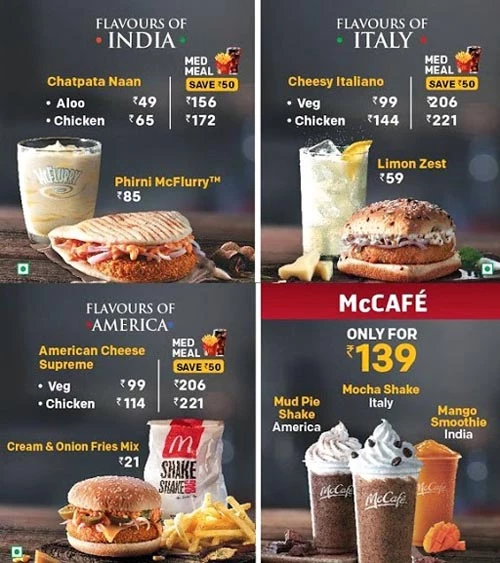
Price Strategy of McDonald’s
The pricing strategy of McDonald’s has always been to offer food at low prices. This is what has allowed the restaurant to be successful for many years.
This also has primarily helped McDonald’s build its reputation as one of the top fast-food brands in the world. However, with the costs of living continuing to rise, McDonald’s has begun offering combos and specials in an effort to entice customers and churn out profits through economies of scale.
In India, the brand came up with a punchy line – “Aap Ke Zamane Mein, Baap Ke Zamane Ke Daam” . This was done back in 2008 to attract lower and middle-class customers to experience the offerings of McDonald’s India and it worked out very well.

Place and Distribution Strategy of McDonald’s
McDonald’s is one of the world’s leading quick-service restaurants (QSR) with over 38,000 restaurants in 100+ countries. It recently opened nearly 1,000 new restaurants globally & also modernized another 900 restaurants in the US.
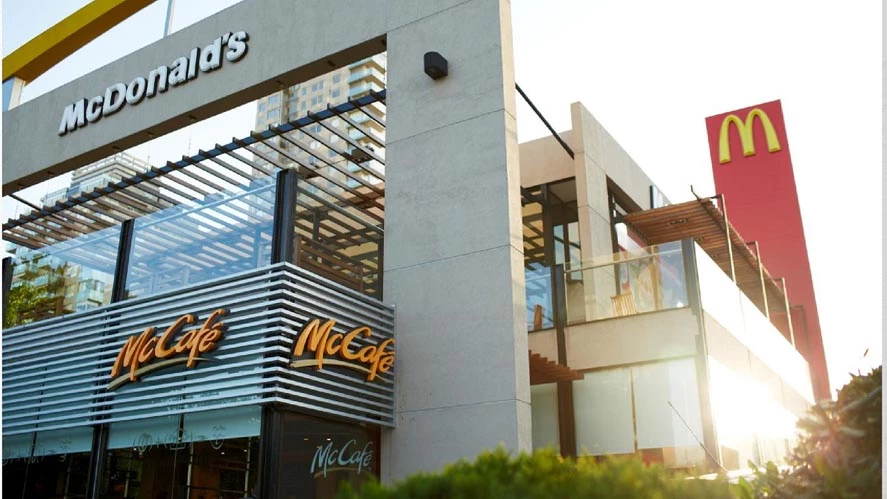
It has opened different restaurant formats as well as drive-ins, online ordering, and tying with food delivery partners . These new formats allow the customers to get the desired food at a particular time and place which also helps them to have a better experience overall.
The stores themselves are clean unlike others as they always keep their outdoor seating space sanitized while having indoor seating areas for an elegant ambience.
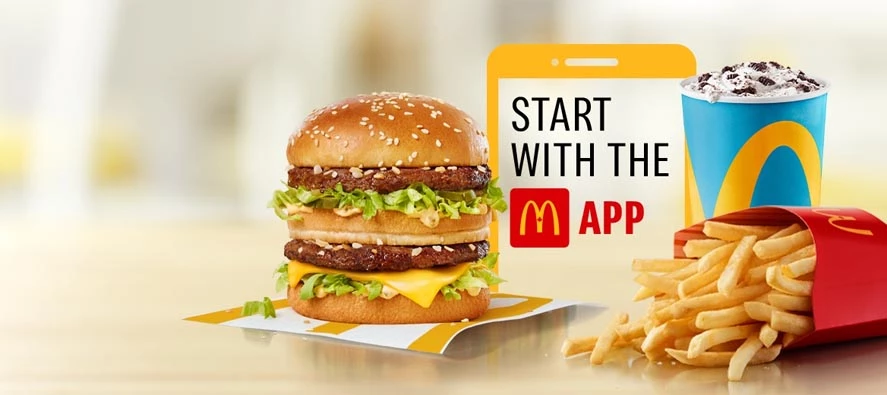
Promotion Strategy of McDonald’s
McDonald’s uses a lot of promotional techniques as promotional activities help build brand loyalty and interest. It gives people who may not normally go to McDonald’s a reason to go there.
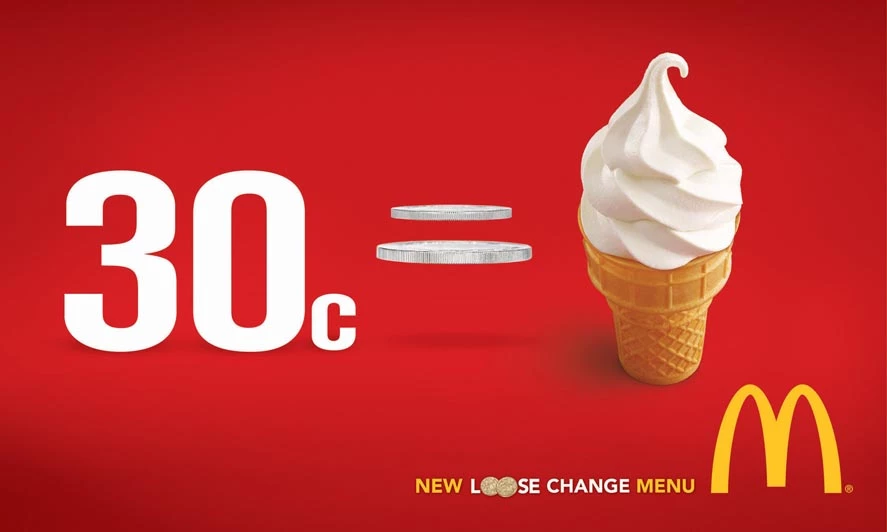
Just like any other company, McDonald’s also sponsors various promotion campaigns to push their brand. Promotions help in creating a sense of community and association between the company and its customers.
Now that we know about McDonald’s offerings and its promotional tactics, let us now go through the core marketing elements of its marketing strategy in the coming section.
McDonald’s Marketing Strategy in India and Globally
With an innovative approach to marketing and consumption patterns through value-added menu improvements, McDonald’s aims to significantly improve market share in key markets through continually improving customer satisfaction and attracting new customers through cost savings, operational efficiencies and improving brand awareness.
So let us look at some of the marketing strategies implemented by McDonald’s over the past years .
A Detailed Focus on McDonald’s Franchise Model
McDonald’s has made such a franchise model that many companies even today replicate this model in their operations.
Why did their model work? Two main factors contributed to the success of the Model: First, McDonald’s made a huge investment to ensure that the quality of services it provided was consistent across all its franchise outlets. The company invested in acquiring its products from local regions and crafted menus that catered to individual regions’ palettes.
The above two factors have worked wonders for McDonald’s and paved the way to enter and expand its reach globally.
Catering to All Age Audience
Being a fast-food restaurant, MC Donaldss decided to cater to all ages. Since then McDonald’s has scouted ways to market its offering for all age groups of a family.
Mcdonald’s came up with options like Happy Meal to target children and also offered its meals in bigger packages and different portion sizes to ensure that hunger be it small or large can be satisfied at Mcdonald’s.
McDonald’s – I’m Lovin’ It…. Para Pap Pap Paa:
“I’m Lovin’ It… Para Pap Pap Paa” is a very well-known jingle that has been used by McDonald’s for a very long time now.
This jingle highlights the positive experience one can have while dining at McDonald’s. The jingle is memorable because it speaks about how happy consumers are during their meals there, and how helpful and friendly the employees are.
Brand Mascot of McDonald’s
What is the best McDonald’s brand mascot? A funny clown character that McDonald’s can successfully market to both children and adults. The brand mascot strategy was first implemented by McDonald’s in 1963 and since then this mascot has become an integral part of the company’s legacy.
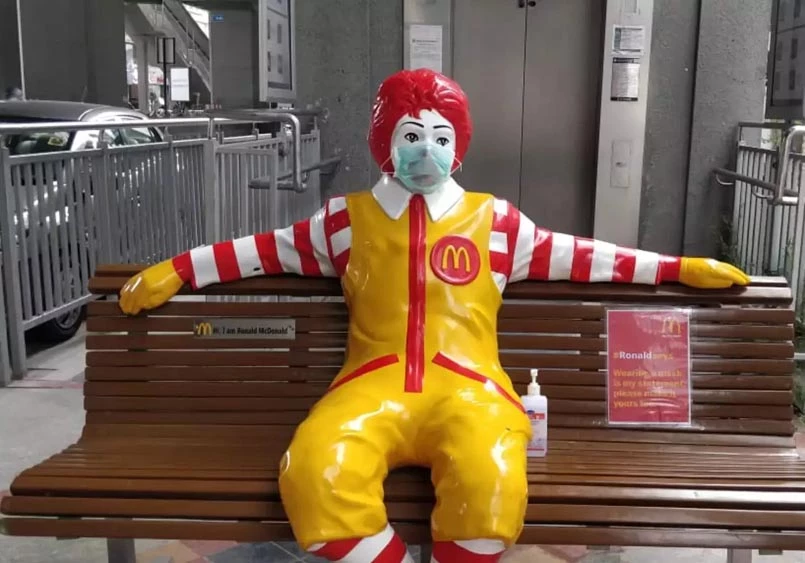
Collaborations with McDonald’s
McDonald’s has a long history of collaboration with various companies and artists. The motive behind these collaborations is to maintain its brand reinforcement in the minds of its customers. This goes beyond simply creating advertising campaigns that promote the value of its products.
It very recently collaborated with BTS – the very popular South Korean Music band where it introduced a special McDonald’s meal called the BTS Meal. Likewise, it has collaborated with artists like Travis Scott, and J Balvin as well as Companies like Coca-Cola .
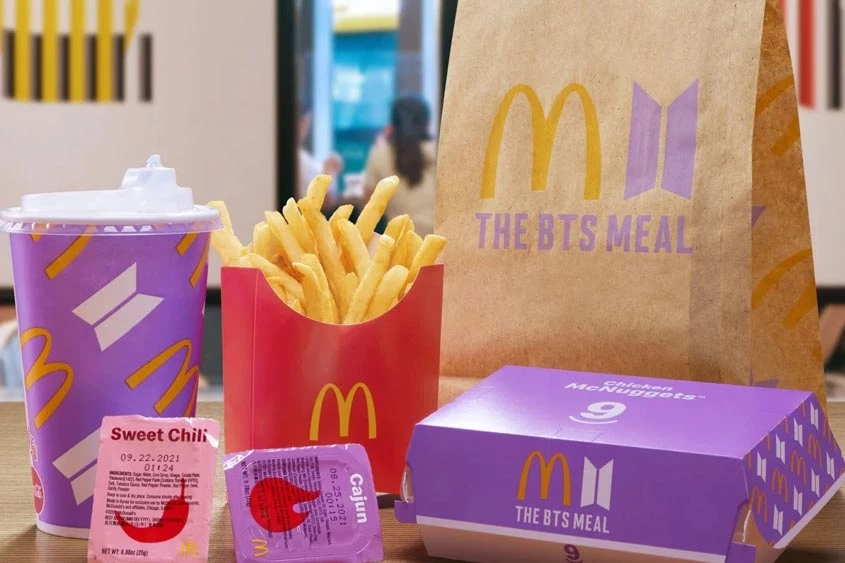
Digital Marketing Strategies of McDonald’s
By adopting digital marketing practices, McDonald’s has been able to increase its brand awareness and create demand for its offerings. The information promoted is similar to the ones used in traditional marketing platforms such as TV, billboards, newspapers, etc., however, the execution of the same content differs.
By encouraging its customers to click pictures of their meals and post them on various social media platforms. This growing food photography trend has helped McDonald’s to lure new customers, in fact, between the period of September 2018 and February 2019, there were 4.9 million McDonald’s logos posted on Twitter globally.
The company also adopted SEO practices, where it found that its “organic” practices perform better than “sponsored” promotions. As per Simplilearn, in December 2019, McDonald’s received 90.7% of the search traffic through organic searches by their customers, while the remainder was received through sponsored activities.
McDonald’s has increased its engagement with its customers by interacting with them on social media platforms like Facebook and Instagram. Also communication of various offers and discounts through social media have also been a factor contributing to the increase in customer traffic on its website and App.
By incorporating digital elements in McDonald’s marketing strategy, the company has been able to maximise its reach.
Are you interested in learning digital marketing strategies that can help your business grow, then I recommend you check this blog on “ IIDE’s PG in Digital Marketing ROI ” so that you can understand how investing in a PG course can help you reap benefits for your business in the long run.
Marketing & Advertising Campaigns of McDonald’s India
A marketing campaign can have many goals, but at the core, they are all about getting more customers. An effective and well-timed campaign will create a demand which then supports the product or service.
When it comes to McDonald’s, it has a very strong strategy in place. Right from showcasing its delicious burgers along with bringing out the positive “McDonald’s vibe” to ending the commercials with slogans like, “I’m Lovin’ It… Para Pap Pap Paa” .
So let us look at some of the popular campaigns of McDonald’s.
Kartik Aaryan Meal by Mcdonald’s India
Mcdonald’s India introduced the new Kartik Aaryan Meal including burger, fries, and a pizza puff with a different packaging than unusual. The meal also features a QR Code, which upon scanning, fans can take a selfie with him virtually.
We Get It – Campaign & Commercial Ad
Another Campaign launched by McDonald’s India was “We Get It” revolving around the craziness of life and how McD continues to make you feel special and give the best experience through that.
There’s A McCafe for Every Moment – A Marketing Campaign of McDonald’s India
McDonald’s India came up with this campaign to highlight its beverage range, McCafe and how they are there for all the good, bad and neutral moments of life.
This campaign was released back in 2017, showcasing all the minute elements of life through a catchy theme song.
Family time means McDonald’s #Mealsmakefamilies – A Marketing Campaign gaining lots of love
McDonald’s India came up with this campaign to highlight how meals bring families together.
This campaign which was launched recently showcases some relatable moments people share with families while having a McDonald’s meal.
Marketing & Advertising Campaigns of McDonald’s during the Covid-19 Pandemic:
McDonald’s released a series of advertising commercials showcasing how so many things have changed since the pandemic . The basic idea behind the campaign was to highlight how life has changed but McDonald’s is still there, offering the same positive experience with extra hygiene and safety measures.
#MatchedByYou – A Marketing Campaign of McDonald’s India
McDonald’s introduced an exciting campaign #MatchedByYou. It shows a love triangle between burgers, fries, and cola. This campaign showcased the offering of food combos for a price as low as ₹45.
After reading the McDonald’s Marketing Strategy, I suggest that you take a deeper look into the SWOT Analysis of Mcdonald’s .
Top Competitors of McDonald’s
Like fast fashion, fast food outlets are also trying to get a share of the monopoly that McDonald’s once enjoyed. Here are a few top competitors of McDonald’s in India as well as internationally:
1. Top Competitors in India
- Burger King
- Jumbo King
- Wow Momo’s
- Local Food Joints
2. Top Competitors Internationally
- Smokin Joes
- Burger King
Failed Campaigns of McDonald’s
We looked at the campaigns that brought the essence of McDonald’s to everyone’s screen but now let’s look at some of the failed campaigns that didn’t hit a chord with the audience.
1. #McDStories on Twitter
In the late 2010s, McDonald’s introduced a hashtag on Twitter – #McDStories & that encouraged their fans to share their stories revolving around the Happy Meal.
What the brand expected was stories that would inspire people to get together with their friends and family to enjoy a Happy Meal.
Instead, Twitter users started using this hashtag sarcastically and shared their negative experiences with McDonald’s.
Here’s one of the tweets using #McDStories:
2. Controversial Ad in India
In 2023, McDonald’s released a commercial ad where a customer was wooing a female staff member. The ad didn’t go well without the viewers and faced a lot of backlash.
Q1. What is the marketing strategy of McDonald’s?
Ans: McDonald’s marketing strategy adopts an emotional approach by marketing Ads that evoke emotions, such as togetherness, joy, and laughter among its target audience. The only aim in evoking such emotions is to show that this brand can deliver an enjoyable experience and make their moments cherishable.
Q2. What type of strategy does McDonald’s use?
Ans: McDonald’s has heavily focused on its pricing strategy by keeping its price as low as possible with the aim to deliver happiness in the lowest possible price.
Q3. What is the marketing strategy of McDonald’s in India?
Ans: McDonald’s marketing strategies in India adopt 5ps: product, price, place, promotion and people. The primary aim of all these 5 Ps is to deliver value to its products and build a relationship over the long run.
Q4. Why is McDonald’s marketing so successful?
Ans: McDonald’s has been working on creating a strong brand through its marketing efforts involving traditional and digital marketing channels. Such consistent communication has helped the community to build a strong relationship with their customers contributing to the success of their marketing efforts.
Q5. Who is the target audience of McDonalds?
Ans: McDonald’s caters to everyone, be it children, elders, working professionals, etc. They have curated meals that can cater to both small and large hunger, making their products a go to meal for their audience.
McDonald’s is one of the world’s most recognized fast-food restaurants. With annual revenues in excess of $19 billion, it is no doubt that McDonald’s has a major influence on society in terms of food choices.
Its reach extends far beyond the borders of its home country and geographically encompasses many nations around the globe. With a strong presence on both offline and online marketing, and cruise control over production and distribution, McDonald’s looks very well placed to take up industry-changing challenges.
Want to learn how you can create such compelling strategies? Head onto our Online Digital Marketing Courses where you will be trained in such aspects.
Let us know your thoughts on this case study in the comment section down below. Thank you for reading, and if you liked our then do share this in your circle.
Liked our work? Interested in learning further? Do check our website for more. Also, if you’re interested in Digital Marketing, you can check out our Free Digital Marketing Masterclass by Karan Shah.
Until then, see you next time!
Aditya Shastri
Lead Trainer & Head of Learning & Development at IIDE
Leads the Learning & Development segment at IIDE. He is a Content Marketing Expert and has trained 6000+ students and working professionals on various topics of Digital Marketing. He has been a guest speaker at prominent colleges in India including IIMs...... [Read full bio]
This is a concise and well written case study of Mc Donald’s. It will be useful for Management students .
One of the best detailed report i have read. Great work, great research.
Very well written blog on mcdonalds marketing strategy which makes us understand how McDonald’s is growing instead of so much competition
McDonald’s leverages nostalgia and innovation, captivating diverse consumer demographics effectively.
Submit a Comment Cancel reply
Your email address will not be published. Required fields are marked *
Submit Comment
This site uses Akismet to reduce spam. Learn how your comment data is processed .
Related Posts
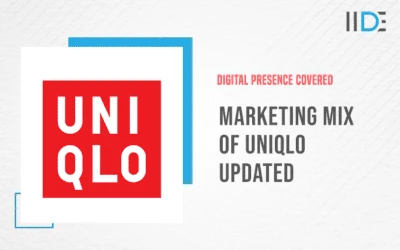
Marketing Mix Of Uniqlo with Updated Company Overview and Explanations
by Aditya Shastri | May 15, 2024
Uniqlo is a Japanese clothing brand known for its high-quality essential pieces formed from the...
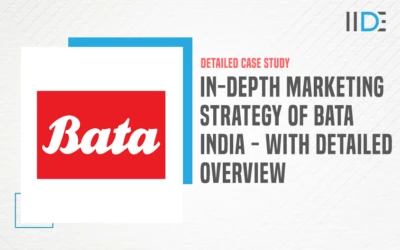
In-depth Marketing Strategy of Bata India – India’s Largest Footwear Company
In this article, we will learn about the marketing strategy of Bata India, the largest footwear...
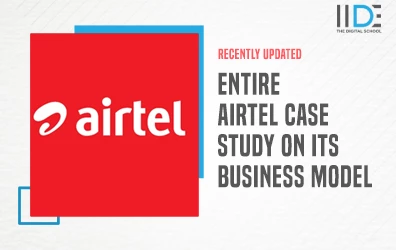
Airtel: Case Study on its Business Model and Marketing Strategy
Bharti Airtel is one of the three telecom giants of India, known for its distinct and engaging...
" * " indicates required fields
I’m Interested in This Masterclass
By providing your contact details, you agree to our Terms of Use & Privacy Policy

Digital Innovation and Transformation
Mba student perspectives.
- Assignments
- Assignment: Digital Winners during the…
Committing to the Core: How McDonald’s Innovated to Survive (and Thrive) During the COVID-19 Pandemic

During the COVID-19 pandemic, McDonald's emerged as the winner in fast casual through digital innovations along their core competencies for their core consumers.
Though the impact of COVID-19 has been felt across the business community, the fast-casual restaurant industry has faced especially high adversity in the face of rapidly changing consumer behavior caused by the pandemic. According to Crunchtime , US fast-casual same store sales dropped to 56% of pre-pandemic levels by April 2020, with social distancing and restrictions on indoor capacity especially hurting fast-casual restaurants whose business models relied more heavily on larger dine-in crowds than its quick service restaurant (QSR) counterparts.
And though many fast-casual chains quickly adapted to stay afloat during their industry’s most trying time — one in particular not only adapted to the short-term challenges presented by the pandemic, but positioned itself to emerge as the true winner in the post-pandemic future: McDonald’s . Although the pandemic hit McDonald’s hard and prevented customers from dining in most of their restaurants throughout the year, McDonald’s rose to the occasion and managed to deliver its strongest financial performance of the year in Q420 — announcing that it had recovered 99% of Q419 global same store sales, a tremendous feat.
So how was McDonald’s able to make such a rapid recovery? In the recent Q420 earnings call , CEO Chris Kempczinski attributed McDonald’s success to its new growth strategy encompassing all aspects of McDonald’s business, “ Accelerating the Arches .” Kempczinski explained that at its core, the “Accelerating the Arches” strategy is about “leveraging our competitive advantages,” providing increased value to its current customers and ensuring their continued loyalty. Tactically, this meant significant investment and innovation in what McDonald’s believed to be their key comparative advantages with their core customers — what McDonald’s calls the “three D’s”: digital, drive-thru, and delivery .
Going into the pandemic, McDonald’s actually found itself well positioned to build on its prior digital innovations to create a user experience well-suited for the constraints posed by the pandemic. McDonald’s recent technology innovations — including the development of the McDonald’s mobile application, acquisition of personalization technology provider Dynamic Yield , Mobile Order and Pay, and self-order kiosks — together have transformed customer experiences in and around their restaurants, giving customers more ways to securely pay and personalize their orders to meet their needs. Digital sales exceeded $10B, or nearly 20% of systemwide sales, in 2020 across the top six markets.
Such digital innovations paid off tremendously for McDonald’s drive-thru channel. In the Q320 earnings call , Kempczinski highlighted the strategic opportunity of drive-thru for McDonald’s, noting that “a world with less dine-in and more takeout plays to our significant long-time strength in drive-thru…We have the most drive-thrus. We know how to do it best.” Accordingly, as indoor dining took a plunge during the pandemic, McDonald’s made significant drive-thru technology investments (such as dynamic menu boards — leveraging personalization technology from Dynamic Yield) and operational improvements (such as a staffing overall and dramatically cutting menu items to their “core menu”) to ultimately deliver the value their customers cared most about: speed. These innovations enabled McDonald’s to cut 30 seconds from its drive-thru times on average and move “300 million additional cars” through McDonald’s drive-thrus during the pandemic. Such focus on innovations targeting their core customer enabled McDonald’s to recover sales more quickly than anticipated and become one of the few fast casual restaurants to sustain demand for drive-thru .
Pathways to a Just Digital Future
In addition to drive-thru, enabling delivery perhaps not surprisingly became a significant focus for McDonald’s to provide customers with additional safe channels to order food. Ozan mentioned that delivery has “become a meaningful part of our business” very quickly, scaling up its delivery platform and rapidly expanded the number of restaurants to offer delivery to 28,000 of 41,000 global restaurants. The result — delivery sales have more than tripled.
By focusing innovation on the company’s comparative advantage, the three D’s, McDonald’s was able to create a faster, easier, and better customer experience — even in the face of tremendous change. By improving the customer experience for their core customers, McDonald’s in turn ensured they maintained loyal customers in the face of adversity and successfully recovered sales in a challenging year for the industry.
McDonald’s will continue to build on the “Accelerating the Arches” strategy and is well positioned to continue seeing gains in the coming years. Recently, McDonald’s unveiled a series of changes that will change how the company’s restaurants interact with customers for years, designed to integrate digital ordering more fully into the McDonald’s ecosystem, increase loyalty through a new rewards program, expand its advantage on drive-thru ordering and double down on delivery. Lucy Brady, McDonald’s chief digital customer engagement, said that “technology has changed our expectations as consumers,” and Kempczinski further said that “the needs of our customers coming through the pandemic are going to be different than they were coming in…the restaurant experience we offer must change to meet those evolving needs.” McDonald’s continues to demonstrate a unique focus to meet those evolving needs of their core consumers, and expect McDonald’s to emerge a winner in the evolving fast casual industry.
CrunchTime!. 2021. Restaurant Chain Industry Sales: Tracking US Recovery . [online] Available at: <https://crunchtime.com/blog/restaurant-industry-sales-tracking-us-recovery> [Accessed 10 February 2021].
Hospitality Technology. 2021. McDonald’s Sees Sustained Demand for Drive-Thru . [online] Available at: <https://hospitalitytech.com/mcdonalds-sees-sustained-demand-drive-thru> [Accessed 10 February 2021].
Hospitality Technology. 2021. McDonald’s to Acquire Dynamic Yield . [online] Available at: <https://hospitalitytech.com/mcdonalds-acquire-dynamic-yield> [Accessed 10 February 2021].
McDonald’s, 2021. [online] Corporate.mcdonalds.com. Available at: <https://corporate.mcdonalds.com/content/dam/gwscorp/assets/news-articles/2020/November2020/MCDN-ATA-InfoSheet.pdf> [Accessed 10 February 2021].
Meatpoultry.com. 2021. McDonald’s doubles down on digital, delivery and drive-thru . [online] Available at: <https://www.meatpoultry.com/articles/24456-mcdonalds-doubles-down-on-digital-delivery-and-drive-thru> [Accessed 10 February 2021].
Restaurant Business. 2021. Inside McDonald’s digitally-focused future . [online] Available at: <https://www.restaurantbusinessonline.com/financing/inside-mcdonalds-digitally-focused-future> [Accessed 10 February 2021].
Transcribers, M., 2021. McDonald’s Corp (MCD) Q3 2020 Earnings Call Transcript | The Motley Fool . [online] The Motley Fool. Available at: <https://www.fool.com/earnings/call-transcripts/2020/11/09/mcdonalds-corp-mcd-q3-2020-earnings-call-transcrip/> [Accessed 10 February 2021].
Transcribers, M., 2021. McDonald’s Corp (MCD) Q4 2020 Earnings Call Transcript | The Motley Fool . [online] The Motley Fool. Available at: <https://www.fool.com/earnings/call-transcripts/2021/01/28/mcdonalds-corp-mcd-q4-2020-earnings-call-transcrip/> [Accessed 10 February 2021].
Student comments on Committing to the Core: How McDonald’s Innovated to Survive (and Thrive) During the COVID-19 Pandemic
Would it be fair to say that the automation McDonald’s was bringing in to deal with demands for a better minimum wage helped it deal with the pandemic better? Also, the “Accelerating the Arches” strategy though profitable for McDonald’s will cause more automation, leading to loss of jobs in the future. This could lead to McDonald’s have a public perception issue in the future which might in turn end up negatively impacting their profits.
Hi Vikram — yes this is a great point. I should note there is tremendous risk with the approach McDonald’s is taking. You’re right that the future they’re proposing would fully automate the drive-thru experience (e.g. AI for taking orders and making the food, building conveyor belts to deliver the food to cars). Further, another risk they are facing has to do with franchisees. Similar to our Domino’s case, McDonald’s will mandate the technology changes and charge additional fees. Franchisees were apparently caught off guard with the Accelerating the Arches announcement. It’ll be interesting to see how they adjust given these challenges.
Leave a comment Cancel reply
You must be logged in to post a comment.
- SUGGESTED TOPICS
- The Magazine
- Newsletters
- Managing Yourself
- Managing Teams
- Work-life Balance
- The Big Idea
- Data & Visuals
- Reading Lists
- Case Selections
- HBR Learning
- Topic Feeds
- Account Settings
- Email Preferences
McDonald’s and the Challenges of a Modern Supply Chain
Three lessons.
Recently, McDonald’s, the world’s iconic largest food service provider, has been (forgive the cliché) through the grinder. Poor performance has led to the departure of its CEO and plenty of critical attention in the business pages . Part of this story relates to the provenance, or origins, of its products: Chains that provide more upmarket “fast casual” dining such as Panera, Chipotle, and Shake Shack have brands that speak of freshness, health, and trustworthy sourcing.
- Steve New teaches operations and supply-chain management at the University of Oxford’s Saïd Business School and is a fellow of Hertford College.
Partner Center
Case Study: McDonald’s Responds to the COVID-19 Crisis
Select your language.
Looking for location specific content?

The special report by Aon focuses on the impact of the COVID-19 crisis on society and the economy, and outlines methods for reintroducing fundamental aspects of working, traveling, and convening.
Key takeaways, the need for organizations to prioritize risk management strategies in the wake of covid-19., how companies can better manage their human capital in a post-covid world., how companies can pursue growth and innovation opportunities while still managing risk..
In Aon’s special report, Helping Organizations Chart a Course to The New Better, Aon reveals exclusive research on the issues rising from the COVID-19 crisis and methods of re-introducing fundamental aspects of society and the economy: working, traveling and convening. As part of this new report, leading global businesses and innovative thinkers reveal their strategies and action plans as they make their way to a New Better. Here’s McDonald’s story. McDonald’s Corporation operates in nearly 120 countries around the world. As a large global restaurant chain founded in 1955, it has extensive experience in adjusting to changing business conditions. While a potential pandemic was already in the organization’s risk preparation program, COVID-19 has impacted every community in ways no one could have fully forecast, and its rapid acceleration pushed the company to move quickly. McDonald’s level of risk preparedness, experience in managing health and safety concerns, and supply chain planning all came into play. “Covid-19 became part of everyone’s job,” said Bill Garrett, senior vice president and head of the U.S. Covid-19 response team at McDonald’s. “We pushed ourselves to think differently about many things including menu, operating procedures, and how to serve our customers and employees (in both restaurants and corporate offices) in new and different ways that prioritized their safety.”
Mobilizing Leadership Teams to Enable Agility to Make Better Decisions
As part of its response to the pandemic, McDonald’s developed an agile model and team structure that supported integrated decision making. A COVID-19 leadership team led the charge, reporting to McDonald’s U.S. senior leadership, which initially met three times daily to address quickly changing information and evolving recommendations. Subgroups, focused on a specific area of the business, brought their own solutions—for example, a team focused on enhancing more than 50 processes in U.S. restaurants as part of the swiftest operational transformation in the company’s history; another team focused solely on engaging with third party experts to provide ongoing counsel and expertise on emerging science in infection prevention and control and share best practices to mitigate the spread of COVID-19. Employee resources and support were also critically important, with sub teams focused on office re-openings or dedicated to employee health and wellness. This structure allowed the company to address the pandemic on multiple levels in a targeted way—and agility was crucial. “We have empowered our functional leaders to make necessary decisions to help protect people and our business, but we also wanted to provide consistency in our approach to the pandemic to ensure we emerged stronger than ever from this crisis – having common principles supported this approach,” Garrett said.
Using Data and Feedback to Build Trust and Confidence in Operating Restaurants and Offices
Integrated decision making was at the heart of driving safety focused procedures for McDonald’s crew and corporate employees. McDonald’s opened a new state-of-the-art headquarters in downtown Chicago in 2018, but its open concept required a cross-functional team of HR, legal, global safety, and others to create an office toolkit that addressed multiple dimensions of working in an open-concept design during Covid-19. The goal is to help ensure that employees are safe and feel confident—and the collaborative approach is successful. “People were surprised at how safe they felt when they walked into the office, so we were very proud of the team that worked together to make that happen,” says Sheri Malec, Senior Director of Workplace Solutions at McDonald’s. “In reflecting on lessons learned during this time, one of my key takeaways is agility. The situation is changing so rapidly so you have to be ready to respond as new data comes out or new scientific recommendations are released.”
Accelerating Employee Support Pre- and Post-Pandemic
Along with many other organizations, the pandemic has meant McDonald’s is now re-examining its thinking about the corporate workforce post-pandemic. The flexibility the company had already put in place before COVID-19 struck laid a strong foundation for changing working conditions and best supporting employees. “We already had a system to support our people’s personal needs during the workday,” said Malec. “The flexibility and working models we had before the pandemic really set us up well to adapt to workforce changes.” General support around health and wellness was key at McDonald’s along with supporting managers so they could help their people. “We gave them the tools to understand how different employees would be affected and make sure they’re adjusting accordingly,” said Malec. This case study originally appeared with the special report, Helping Organizations Chart a Course to The New Better. Check out the full report for defining moments of the pandemic, case studies of leading companies navigating change, key insights, and more.
General Disclaimer
The information contained herein and the statements expressed are of a general nature and are not intended to address the circumstances of any particular individual or entity. Although we endeavor to provide accurate and timely information and use sources we consider reliable, there can be no guarantee that such information is accurate as of the date it is received or that it will continue to be accurate in the future. No one should act on such information without appropriate professional advice after a thorough examination of the particular situation.
Terms of Use
The contents herein may not be reproduced, reused, reprinted or redistributed without the expressed written consent of Aon, unless otherwise authorized by Aon. To use information contained herein, please write to our team.
Aon's Better Being Podcast
Our Better Being podcast series, hosted by Aon Chief Wellbeing Officer Rachel Fellowes, explores wellbeing strategies and resilience. This season we cover human sustainability, kindness in the workplace, how to measure wellbeing, managing grief and more.

Podcast 21 mins
Podcast 38 mins
Podcast 30 mins
Podcast 31 mins

Podcast 26 mins

Podcast 27 mins
Podcast 25 mins
Aon Insights Series UK
Expert Views on Today's Risk Capital and Human Capital Issues

Article 4 mins

Article 5 mins

Article 6 mins

Article 8 mins

Article 7 mins

Construction and Infrastructure
The construction industry is under pressure from interconnected risks and notable macroeconomic developments. Learn how your organization can benefit from construction insurance and risk management.

Article 19 mins

Article 9 mins

Article 14 mins

Article 12 mins

Report 1 mins

Article 21 mins

Stay in the loop on today's most pressing cyber security matters.

Cyber Labs 65 mins

Cyber Labs 60 mins

Cyber Labs 12 mins

Cyber Labs 9 mins

Article 13 mins

Article 10 mins

Article 16 mins

Article 41 mins

Article 22 mins

Cyber Resilience
Our Cyber Resilience collection gives you access to Aon’s latest insights on the evolving landscape of cyber threats and risk mitigation measures. Reach out to our experts to discuss how to make the right decisions to strengthen your organization’s cyber resilience.

Article 17 mins

Employee Wellbeing
Our Employee Wellbeing collection gives you access to the latest insights from Aon's human capital team. You can also reach out to the team at any time for assistance with your employee wellbeing needs.

Environmental, Social and Governance Insights
Explore Aon's latest environmental social and governance (ESG) insights.

Podcast 18 mins
Q4 2023 Global Insurance Market Insights
Our Global Insurance Market Insights highlight insurance market trends across pricing, capacity, underwriting, limits, deductibles and coverages.

Regional Results
How do the top risks on business leaders’ minds differ by region and how can these risks be mitigated? Explore the regional results to learn more.

Article 15 mins

Article 18 mins
Human Capital Analytics
Our Human Capital Analytics collection gives you access to the latest insights from Aon's human capital team. Contact us to learn how Aon’s analytics capabilities helps organizations make better workforce decisions.

Article 25 mins
Podcast 19 mins

Article 11 mins
Insights for HR
Explore our hand-picked insights for human resources professionals.

Our Workforce Collection provides access to the latest insights from Aon’s Human Capital team on topics ranging from health and benefits, retirement and talent practices. You can reach out to our team at any time to learn how we can help address emerging workforce challenges.

Report 23 mins

Article 24 mins

Mergers and Acquisitions
Our Mergers and Acquisitions (M&A) collection gives you access to the latest insights from Aon's thought leaders to help dealmakers make better decisions. Explore our latest insights and reach out to the team at any time for assistance with transaction challenges and opportunities.

Navigating Volatility
How do businesses navigate their way through new forms of volatility and make decisions that protect and grow their organizations?
Parametric Insurance
Our Parametric Insurance Collection provides ways your organization can benefit from this simple, straightforward and fast-paying risk transfer solution. Reach out to learn how we can help you make better decisions to manage your catastrophe exposures and near-term volatility.

Pay Transparency and Equity
Our Pay Transparency and Equity collection gives you access to the latest insights from Aon's human capital team on topics ranging from pay equity to diversity, equity and inclusion. Contact us to learn how we can help your organization address these issues.

Property Risk Management
Forecasters are predicting an extremely active 2024 Atlantic hurricane season. Take measures to build resilience to mitigate risk for hurricane-prone properties.

Our Technology Collection provides access to the latest insights from Aon's thought leaders on navigating the evolving risks and opportunities of technology. Reach out to the team to learn how we can help you use technology to make better decisions for the future.

Top 10 Global Risks
Trade, technology, weather and workforce stability are the central forces in today’s risk landscape.

Our Trade Collection gives you access to the latest insights from Aon's thought leaders on navigating the evolving risks and opportunities for international business. Reach out to our team to understand how to make better decisions around macro trends and why they matter to businesses.

Report 4 mins

Report 21 mins

Article 30 mins

With a changing climate, organizations in all sectors will need to protect their people and physical assets, reduce their carbon footprint, and invest in new solutions to thrive. Our Weather Collection provides you with critical insights to be prepared.

Report 26 mins

Podcast 10 mins

Podcast 9 mins

Workforce Resilience
Our Workforce Resilience collection gives you access to the latest insights from Aon's Human Capital team. You can reach out to the team at any time for questions about how we can assess gaps and help build a more resilience workforce.

Report 5 mins
Podcast 20 mins

More Like This

Driving a Future-Proof, Skills Based Approach for the Renewable Energy Sector
The renewable energy sector is undergoing a sweeping transformation, as it plays a pivotal role in the challenge to achieve global net-zero goals. Attracting, upskilling and retaining talent is critical for sustainability.

How to Navigate Evolving Construction Contractor Risks in EMEA
Contractors in EMEA face an array of risks they must mitigate or transfer while managing the complexities inherent in major construction projects.

Article 20 mins
8 Focus Areas for the Renewable Energy Sector
As more companies seek to reduce their carbon footprint, the renewable energy sector continues to grow, presenting both opportunities and red flags for organizations with renewable energy growth plans.

Ready to Explore Further?
Subscribe to Aon
Sign up to receive updates on the latest events, insights, news and more from our team.
What Comes Next?
After submitting your information, you will receive an email to verify your email address. Please click on the link included in this note to complete the subscription process, which also includes providing consent in applicable locations and an opportunity to manage your email preferences. All subscription information you provide will be managed in accordance with Aon's global privacy statement .
You will soon receive an email to verify your email address. Please click on the link included in this note to complete the subscription process, which also includes providing consent in applicable locations and an opportunity to manage your email preferences.
Featured Insights

Article 5 Min Read
Litigation and Contingent Risks: Unlocking the Value in M&A
Article 10 Min Read
How Data and Analytics Can Optimize HR Programs
I’m interested in, talking to aon, about your business, how can we help.
Aon will use the information you provide on this form to respond to your specific request. Submitting this form will not subscribe you to receiving marketing communications from Aon, and all information provided will be managed in accordance with Aon's global privacy statement .
Let’s Connect
We’ll be in touch soon..
Your request is being reviewed so we can align you to the best resources on our team. In the meantime, we invite you to explore some of our latest insights below.
Contact me: I’d like to talk to a member of the Aon team about this topic.
Subscribe: Sign up to receive updates on the latest events, insights, news and more from our team.
Aon and other Aon group companies will use your personal information to contact you from time to time about other products, services and events that we feel may be of interest to you. All personal information is collected and used in accordance with Aon's global privacy statement .
Please click here to manage your communication preferences.
This site is protected by reCAPTCHA and the Google Privacy Policy and Terms of Service apply.
Download Now
Your file is downloading..
If encounter an issue, use the link below to start a new download.
- Sign into My Research
- Create My Research Account
- Company Website
- Our Products
- About Dissertations
- Español (España)
- Support Center

Find your institution
Examples: State University, [email protected]
Other access options
- More options
Select language
- Bahasa Indonesia
- Português (Brasil)
- Português (Portugal)
Welcome to My Research!
You may have access to the free features available through My Research. You can save searches, save documents, create alerts and more. Please log in through your library or institution to check if you have access.

Translate this article into 20 different languages!
If you log in through your library or institution you might have access to this article in multiple languages.

Get access to 20+ different citations styles
Styles include MLA, APA, Chicago and many more. This feature may be available for free if you log in through your library or institution.

Looking for a PDF of this document?
You may have access to it for free by logging in through your library or institution.

Want to save this document?
You may have access to different export options including Google Drive and Microsoft OneDrive and citation management tools like RefWorks and EasyBib. Try logging in through your library or institution to get access to these tools.

- More like this
- Preview Available
- Scholarly Journal

McDonald's: A Case Study in Glocalization
No items selected.
Please select one or more items.
You might have access to the full article...
Try and log in through your institution to see if they have access to the full text.
Content area
The purpose of this research report was to assess McDonald's globalization strategy. We examined McDonald's strategy across six dimensions: menu, promotion, trademarks, restaurants, employees, and service. We also compared the company's performance across these six dimensions in 10 different countries: Saudi Arabia, France, the United Kingdom, Greece, Brazil, Indonesia, India, China, Japan, and New Zealand to measure McDonald's success in capitalizing on globalization and localization. As discussed in this report, McDonald's is a global brand through its worldwide standards and training operations, but the company is also local, with its franchising to local entrepreneurs, locally sourcing food, and targeting specific local consumer market demands. McDonald's is an excellent example of blending global with local - an organization that has glocalized very successfully.
Introduction and Purpose
McDonald's has been serving fast food to America since 1955 and has grown into one of the world's leading fast food giants. Today, McDonald's is the leading global foodservice retailer with 1.7 million employees and more than 34,000 restaurants in 119 countries serving nearly 69 million people each day (McDonald's, Annual Report, 2012).
Not too long ago people believed McDonald's would become "a lumbering cash cow in a mature market" (Serwer & Wyatt, 1994). However, its success abroad has offset the maturing market in America. In fact, 65% of McDonald's sales came from international revenues (McDonald's, Annual Report, 2012.) Its worldwide operation concentrates its global strategy, "Plan to Win," and on customer experience, which includes people, products, place, price, and promotion.
This paper will compare McDonald's marketing strategy to determine how well it capitalizes on both globalization and localization. It will look at this strategy by examining ten different countries: Saudi Arabia, France, the United Kingdom, Greece, Brazil, Indonesia, India, China, Japan, and New Zealand, across six different dimensions: menu, promotion, trademarks, restaurants, employees, and service.
McDonald's: The American Standard
The McDonald's American model focuses on fast and convenient service with high purchasing turnover. Its recognizable bright red and yellow colors with the iconic golden arches reaching into the sky offer Americans a piece of the familiar in a foreign country. "Our goal is to become customers' favorite place and way to eat and drink by serving core favorites such as our World Famous Fries, Big Mac,...
You have requested "on-the-fly" machine translation of selected content from our databases. This functionality is provided solely for your convenience and is in no way intended to replace human translation. Show full disclaimer
Neither ProQuest nor its licensors make any representations or warranties with respect to the translations. The translations are automatically generated "AS IS" and "AS AVAILABLE" and are not retained in our systems. PROQUEST AND ITS LICENSORS SPECIFICALLY DISCLAIM ANY AND ALL EXPRESS OR IMPLIED WARRANTIES, INCLUDING WITHOUT LIMITATION, ANY WARRANTIES FOR AVAILABILITY, ACCURACY, TIMELINESS, COMPLETENESS, NON-INFRINGMENT, MERCHANTABILITY OR FITNESS FOR A PARTICULAR PURPOSE. Your use of the translations is subject to all use restrictions contained in your Electronic Products License Agreement and by using the translation functionality you agree to forgo any and all claims against ProQuest or its licensors for your use of the translation functionality and any output derived there from. Hide full disclaimer
Suggested sources
- About ProQuest
- Terms of Use
- Privacy Policy
- Cookie Policy

Ambitious goals, locally delivered: McDonald's UK & Ireland
Case study on how McDonald's achieved ambitious goals with a focus on local delivery
Those golden arches are recognised the world over. With more than 38,000 locations globally (1,400 in the UK and Ireland), fast food chain McDonald’s is uniquely placed to give something back to the many communities it serves. Through its global independent non-profit Ronald McDonald House Charities, it supports families with sick and injured children, helping them stay together near hospitals and healthcare facilities. Its franchise model is a real strength when it comes to connecting with the community, says James Thorne, Senior Director, People Lead, Europe. ‘If you go all the way back, the reason for franchising our business is so that you can back local businesspeople in the communities they live and work in. We want our franchisees to be entrepreneurs within their local communities and to focus on what matters to their communities.’
Organisation : McDonald’s UK & Ireland
Sector : Hospitality
Size : 130,000 people
Connecting with community
McDonald’s UK & Ireland’s sustainability plan, Plan for Change, contains community and people-related commitments under four key pillars: Planet Positive, Great Food, Great Restaurants and People Positive. One commitment states: ‘We will help our communities gain new skills and open doors through training, work experience and equal employment opportunities.’ This means having a youth worker in every restaurant by 2024, supporting 3,000 apprentices by 2025, and helping 1 million people gain new skills and access jobs by 2030. ‘It’s about leveraging our strengths, and one has always been around giving people opportunities,’ says Thorne.
To help deliver its goal of a youth worker in every restaurant by 2024, McDonald’s has partnered with Children in Need. ‘The aspiration is to leverage our system to help communities,’ says Thorne, adding that the youth workers and other partners will work with franchisees on the issues that are most important to the community.
While Plan for Change is full of ambitious goals, Thorne emphasises the importance of not forgetting the other things that customers care about – for example, litter. ‘People care about seeing a McDonald’s fries wrapper on their local high street,’ he says. ‘That is the foundation of genuinely supporting the community: taking care of local environments. We’ve always done litter picks.’
Role of the people profession
‘We used a lot of our talent and future talent to develop Plan for Change,’ says Thorne, adding that the strong connection with purpose displayed by the younger generation meant the plan was more ambitious than it might have otherwise been. ‘That purpose – why people show up to work – is about feeding and fostering communities. We need to make sure that link and synergy is well understood across the business.’
The people profession has to be able to articulate that purpose across the business and the wider ecosystem, such as through the supply chain and franchise network. While there is flexibility around how franchisees operate, they are held to the same standards as the corporate business, and the people team works with suppliers on issues like diversity. The people team has a presence across all cross-functional business activity. ‘Without activating our people, we are not going to be able to achieve anything,’ says Thorne.
The aspiration is to leverage our strength and our system to help communities.
The full series
Find out how people teams are engaging with external communities and creating value through the lens of ESG strategy

Tackling barriers to work today whilst creating inclusive workplaces of tomorrow.
Bullying and harassment
Discover our practice guidance and recommendations to tackle bullying and harassment in the workplace.

17 May, 2024

19 Apr, 2024

Explore the CIPD’s point of view on responsible business, including recommendations for employers

Learn about embedding employer-supported volunteering in your organisation, different types of opportunities and why it matters

McDonald’s SWOT Analysis
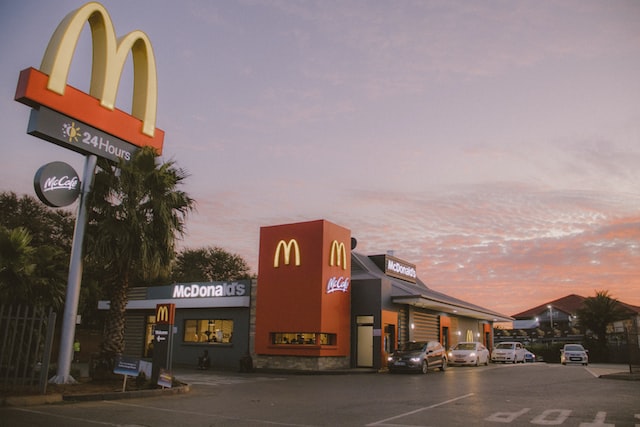
Before we deep dive into the SWOT analysis, let’s get the business overview of McDonald’s. McDonald’s is a fast-food chain founded in 1940 by Richard and Maurice McDonald in San Bernardino, California. Today, it is one of the world’s largest and most well-known fast-food chains, with over 38,000 restaurants in more than 100 countries.
The menu at McDonald’s includes a variety of items such as hamburgers, cheeseburgers, chicken sandwiches, french fries, milkshakes, and soft drinks. In addition to its standard menu, McDonald’s offers limited-time promotional and seasonal items.
McDonald’s has become known for its efficiency and consistency in delivering quick and affordable meals to its customers. It has also faced criticism for the nutritional value and environmental impact of its food and packaging, as well as for the treatment of its workers. In recent years, McDonald’s has made efforts to improve its sustainability practices and introduce healthier menu options.
Financial Performance 2023 : McDonald’s generated $25.5 bn in revenues in 2023 of which $9.7 bn was generated from company-operated restaurants and $15.5 bn was generated from franchised restaurants.
How does McDonald’s make money from the franchise business model?
Here is the SWOT analysis for McDonald’s
A SWOT analysis is a strategic planning tool used to evaluate the Strengths, Weaknesses, Opportunities, and Threats of a business, project, or individual. It involves identifying the internal and external factors that can affect a venture’s success or failure and analyzing them to develop a strategic plan. In this article, we do a SWOT Analysis of McDonald’s.
SWOT Analysis: Meaning, Importance, and Examples
McDonald’s is a highly successful and iconic company with several strengths, some of which include the following:
- Brand Recognition : McDonald’s is one of the most recognizable brands in the world, with its distinctive golden arches logo and well-known slogan, “I’m Lovin’ It.” The company’s branding and marketing efforts have been highly effective in creating a strong and positive image for the brand. Marketing Strategy of McDonald’s that makes you “loving it”
- Global Presence : McDonald’s has a vast global footprint with over 38,000 locations in more than 100 countries, allowing the company to reach a broad customer base and take advantage of economies of scale.
- Strong Franchise System : McDonald’s operates using a franchise model, allowing it to expand rapidly while minimizing the risks and costs associated with owning and operating its own restaurants. The company’s well-established and highly effective franchise system has helped it maintain consistency and quality across its locations.
- Efficient Operations : McDonald’s is known for its highly efficient operations, with streamlined processes and systems that enable the company to serve customers quickly and consistently. This helps to minimize wait times and enhance the customer experience.
- Innovation : McDonald’s has been innovative in introducing new products and services to its menus, such as its famous McCafé line of coffee drinks and all-day breakfast. The company has also invested in digital technology and mobile ordering to enhance customer convenience.
Overall, McDonald’s strengths have helped the company become a global leader in the fast-food industry and maintain its position as a brand for many consumers.
While McDonald’s is a highly successful and iconic company, it also has some weaknesses, including:
- Health Concerns : McDonald’s has faced criticism for its food’s nutritional value and contribution to health problems such as obesity and diabetes. In recent years, the company has made efforts to introduce healthier menu options and reduce the amount of sodium and saturated fat in its food. Still, these efforts have not entirely resolved the issue.
- Negative Public Perception : McDonald’s has also faced criticism for its labor practices, including low wages and poor working conditions for its employees. This has led to a negative public perception of the company and calls for boycotts and protests in some regions. In 2021, McDonald’s cooks and cashiers in 16 cities in the US went on strike to demand the burger giant pay every worker across the McDonald’s system a living wage of at least $15 an hour.
- Dependence on Franchisees : While McDonald’s franchise system is a strength, it also means that the company is highly dependent on its franchisees for revenue and growth. This can create challenges in ensuring consistency and quality across all locations and managing franchisee relationships.
- Limited Menu Appeal: While McDonald’s is known for its signature items, such as Big Macs and french fries, some customers may view its menu as limited or lacking in variety compared to other fast-food chains.
- Environmental Impact : The company has also faced criticism for its environmental impact, including its use of single-use plastics and its contribution to deforestation by sourcing beef and palm oil.
Overall, McDonald’s weaknesses highlight the need for the company to continue to address issues related to nutrition, labor practices, and sustainability while maintaining its market position and profitability.
Opportunities
McDonald’s has several opportunities for growth and expansion, including:
- International Expansion : Although McDonald’s already has a global presence, there are still many untapped markets where the company can expand. This includes emerging markets in Asia and Africa, with increasing demand for fast food.
- Health and Wellness Trends : As consumers become more health-conscious, there is an opportunity for McDonald’s to introduce new and healthier menu options. The company can also leverage its existing supply chain management and operations strengths to create more sustainable and environmentally friendly menu options.
- Digital Technology : McDonald’s has already invested heavily in digital technology, including mobile ordering and payment, which has enhanced the customer experience and streamlined operations. There is further opportunity for the company to innovate in this area and leverage data and analytics to improve its menu offerings and marketing efforts.
- Delivery and Convenience : With the rise of third-party delivery services, there is an opportunity for McDonald’s to expand its delivery offerings and increase convenience for customers. This includes exploring partnerships with popular delivery platforms and investing in its own delivery infrastructure.
- Partnership and Collaborations : There is an opportunity for McDonald’s to partner with other companies or brands to create unique and innovative menu offerings. This can include collaborations with popular food brands or local chefs, which can help to differentiate the company and appeal to new customer segments.
Overall, McDonald’s has several opportunities to continue to grow and evolve its business while addressing changing consumer preferences and societal trends.
McDonald’s faces several threats that could impact its business, including:
- Intense Competition : The fast-food industry is highly competitive, with several major players vying for market share. McDonald’s faces competition from other fast-food chains and emerging trends such as healthier eating options and plant-based diets.
- Changing Consumer Preferences : As consumers become more health conscious and environmentally aware, there is a risk that McDonald’s menu offerings may become less appealing. The company must adapt to changing consumer preferences and continue to introduce new and innovative menu options that align with these trends.
- Economic Factors : Economic factors such as inflation, changes in consumer spending, and currency fluctuations can impact McDonald’s business. Economic downturns or instability in key markets can also negatively impact the company’s revenue and profitability.
- Supply Chain Disruptions : McDonald’s depends on a complex supply chain to source its ingredients and products. Disruptions such as natural disasters, trade disputes, or supply chain breakdowns can impact the availability and cost of key ingredients, negatively impacting the company’s operations.
- Regulatory and Legal Challenges : McDonald’s faces regulatory and legal challenges related to labor practices, food safety, and environmental impact. Regulation changes or legal challenges can impact the company’s operations and profitability.
Overall, McDonald’s faces several threats that can impact its business. The company must continue to adapt to changing consumer preferences and societal trends, invest in innovation and technology, and address potential supply chain and regulatory challenges to remain competitive and profitable in the long term.
Check out the SWOT Analysis of Global Businesses
Related posts.

SWOT Analysis of Customer Service

SWOT Analysis of a recruitment process

SWOT Analysis of a New Product Development

SWOT Analysis of Digital Marketing

SWOT Analysis of an insurance company

SWOT Analysis of a Supply Chain

SWOT Analysis of a Human Resources (HR) department

SWOT Analysis of the call center industry in the US
Type above and press Enter to search. Press Esc to cancel.
McDonald’s Corporation Case Study Analysis
- To find inspiration for your paper and overcome writer’s block
- As a source of information (ensure proper referencing)
- As a template for you assignment
Overview of the Case
Definition of the problem, alternative solutions, selected solution to the problem, expected results and rationale for the solution, positive and negative results.
McDonald’s, the first food chain known for its strong performance in a very competitive industry is facing stiff competition from other firms. The firm’s breakfast offerings are not as competitive as they were before due to strong performance by products from other market players such as Taco Bell, White Castle, Dunkin Brands Group, Burger King and Starbucks.
These firms have new breakfast products which have been received well by consumers in different areas they are operating in. As a result, these firms’ improved performance in the industry has negatively affected McDonald’s market share (Jargon, 2014, p. 1).
McDonald’s poor competitive position can be seen through its declining sales and profit revenues in the past six months. This paper is going to discuss the main marketing issues that McDonald’s faces in its operations and how they can be improved to help the firm regain its competitive position in the industry.
McDonald’s weakening position in the industry is due to its failure to come up with effective marketing strategies that respond to the needs of young consumers. In the past, the firm’s breakfast offerings performed well in the market but it has been losing customers gradually to new firms.
Low innovation in the firm has made it difficult for the firm to attract new consumers who are willing to try out the product it sells in the market (Jargon, 2014, p. 2).
The firm has also failed to come with an effective product development strategy to help it sell new high quality products that satisfy consumers’ expectations. As a result, this has affected the company’s competitive position in the market because it has failed to keep up with modern market trends that are crucial for its long term performance.
The firm also needs to improve the relationships it has with its franchisees. They feel that the firm’s marketing strategies are not effective and fresh ideas are needed to help the firm regain its footing in the industry. In addition, they insist that more needs to be done to improve the quality of the firm’s operations in the industry.
The main actors that need to be analyzed are: McDonald’s, its competitors and franchisees. McDonald’s has not been able to come up with important strategic changes to help it maintain its market share in the industry. Other fast food firms have developed efficient market processes that are responsive to current consumer trends in the market.
Therefore, McDonald’s competitors have been able to institute higher operational standards that position them well in the industry (Jargon, 2104, p. 3). The firm has also been unable to develop beneficial partnerships with its franchisees. They feel that it needs to come up with innovative promotional strategies to attract new customers to sample its products.
McDonald’s faces various problems such as: a weakening brand, low sales, ineffective promotions and the inability to keep up with its competitors. The main problem the firm needs to address to solve all these issues is its marketing mix functions. The company needs to review the four P’s of the marketing mix which are: products, prices, promotions and place.
This will help the firm to improve the value of its internal systems of operations to help it attain high standards of performance in the long run (Bradley, 2010, p. 75).
In addition, the firm needs to understand issues related to the quality of service it offers that need to be improved to help it attain its objectives in the industry. This approach will help the firm to focus on priorities to regain its market share in the industry to help it register good performance in the long run.
Product improvements and developments are a crucial part of any marketing strategy. McDonald’s needs to carry out research to find out specific types products that customers prefer to consume for breakfast. This approach will enable the firm to stay in touch with its customers to anticipate their needs and expectations by providing products that satisfy them.
At the moment, the firm has failed to create appropriate menus that attract customers to make them more willing to try out its product offerings (Bradley, 2010, p. 79).
The pricing of products should be maintained at current levels to make customers have positive perceptions about the quality of products they are purchasing. This requires the firm to develop effective customer relationship management systems that increase the value of its products in the market.
Promotional aspects of operations need an overhaul to enable the firm to regain its competitive position in the market. The firm needs to rethink its strategy of offering customers give away products because this is likely to increase its costs of operations in the long run.
The current strategy of offering give away products has caused disagreements between the firm and its franchisees, a situation that is likely to have a negative effect on the firm’s operations in the long run.
In addition, the firm needs to look at the internal atmosphere in its outlets to find out if it is suitable for consumer’s eating patterns (Rue & Byars, 2003, p. 43). It may be compelled to redesign its restaurants to enable them to offer a memorable service experience to customers.
The firm needs to carry out market research to find out new products which can be introduced to improve its performance in the industry. The firm needs to test some of its product concepts in some franchises to find out how they are likely to be received by customers. This approach will enable the firm to evaluate how they are likely to perform in the firm in the long run.
The main benefit the firm will get out of this strategy is that it will be able to create new revenue streams for its operations and this will help to increase its profits in the industry.
The firm will also be in a position to establish relationships with new customers to make them more interested in consuming its products (Rue & Byars, 2003, p. 49). However, the main disadvantage associated with such a strategy is that the firm may end up experiencing losses especially if the new products do not appeal to customers’ interest effectively.
The firm needs to improve the quality of service it offers to its customers. It needs to come up with new ways of engaging with its customers to make them understand the benefits they can get from its services.
The firm needs to rely more on innovative technology solutions to market its offerings and attract young consumers in the industry. As a result, this will enable the firm to understand new market trends and how they affect its long term operations in the industry (Panda, 2008, p. 37).
The benefit of this approach is that the firm will be in a position to satisfy the needs of its customers because it will sell appropriate products that conform to specific market conditions. The disadvantage the firm is likely to experience from this approach is that it may take a long period of time before it yields positive results.
Another solution the firm needs to use is to change its promotional strategies. The firm needs to engage with people in their communities to make them have positive perception towards its operations. It needs to go out and conduct promotions in schools, colleges and other places to encourage young people to try out some of its breakfast products (Panda, 2008, p. 43).
This approach is likely to yield positive results in the long run because the firm will be able to understand how to elicit positive consumer sentiments that favor its products in the market.
The advantage of changing its promotional strategy will enable the firm to attract new consumer segments that are willing to sample its products. On the other hand, the main disadvantage associated with this strategy is that it may increase the costs incurred by the firm in its operations.
New product concepts will enable the firm to regain the market share it has lost to its competitors. The firm should consider using popular accompaniments with its products to make them more appealing to customers. As a result, this will help the firm to increase the value of its brand in the market to take advantage of new opportunities which exist.
In addition, the firm needs to develop new menus that attract consumers to make them more interested in various products that are on offer.
Customers should be given more consideration when new product concepts are developed to enable them to satisfy their needs and expectations (Salisbury, 2014). This approach will help the firm to increase the value of its brand in the industry making it well prepared to capitalize on various opportunities that exist.
The firm needs to differentiate services offered to customers who consume breakfast in its outlets. It needs to come up with new ways of appealing to their lifestyles. Moreover, the firm needs to find out conditions that exist in its restaurants to find out if they satisfy the high standards it has set for itself in its operations.
Customers’ perceptions towards a particular product are influenced by the quality of service they get whenever they consume it. Therefore, the firm needs to come up with ways of ensuring that its customers have positive experiences whenever they visit its outlets to consume breakfast (Salisbury, 2014).
This entails retraining its employees to ensure they offer prompt and high quality services to customers in different outlets. As a result, the firm needs to empower its employees to make them more willing to satisfy customers who visit its restaurants.
The firm needs to rebrand its breakfast service offerings to differentiate them from other products that are sold during the day. This approach will help the firm to direct customers’ attention to new quality improvements in its operations that make it stand out in the market. As a result, this will improve customers’ perceptions towards the firm’s products because they will feel that they connect with them on a personal level.
The firm needs to use focus strategies to increase the value of its important products in the market. In addition, the firm needs to redefine specific customer segments it will target with its new breakfast products. This will enable the firm to find out specific methods it can use to attract them. Consequently, the firm will be in a position to turn around its operations to by increasing its profit revenues (Vrontis & Pavlou, 2008, p. 299).
There has been an increase in the number of customers who are interested in consuming healthy diets that have low sugar and fat content. The firm needs to engage young people and make them aware about healthy diets it is going to offer for breakfast as part of its menu. As a result, the firm will be in a position to diversify its product offerings to enable it to attract new customer segments in the industry.
In the long term, this will help the firm to increase various sources of incomes for its operations to increase its competitive edge in the industry. Many people are conscious about what they eat due to the high increase in lifestyle diseases which are mainly caused by poor eating habits revenues (Vrontis & Pavlou, 2008, p. 301).
Therefore, this approach will help the firm to demonstrate that it takes seriously the health and wellbeing of its customers and as a result, it will be in a position to turn around its operations.
McDonald’s new product development strategy will help it take advantage of future opportunities in the industry. This will allow the firm to appeal to younger consumers to make them more loyal. As a result, the firm will be in a better position to grow its revenues to overcome the challenges it has been facing in the industry.
The firm’s business model will focus more on adapting to market conditions to increase its competitive advantage in the long run. As a result, this will enable the firm to use efficient methods to respond to external market conditions that have caused it to lose its market share to competitors (Marder, 1997, p. 47).
For a long time, the firm has focused more on standardizing processes in different markets where its operations are based. However, this strategy will enable the firm to be more flexible in its operations to enable it to achieve higher levels of service excellence in the industry.
An effective product development strategy will enable the firm to improve quality perceptions that are associated with its products in the market. As a result, the firm will be in a position to increase the value of its brand in the industry by ensuring that its operations focus more on customer service excellence.
More importantly, the firm will be able to institute learning processes that enable its staff to acquire new skills to make them satisfy customers’ needs and expectations (Marder, 1997, p. 52). This will increase revenues obtained by the firm from its operations in the industry. In addition, this will help the firm to share information with its franchisees regarding specific improvements that need to be made.
The rationale for this solution is due to the fact that the firm is losing its competitive edge in the industry. Therefore, this requires the firm to make its external and internal processes more innovative so that it can be well prepared to satisfy the needs of its customers in different markets. In addition, the firm’s current strategy has the potential of causing conflicts with its franchisees who are important stakeholders.
As a result, this solution will enable the firm to improve the relationships it has with its stakeholders to ensure that they understand the importance of its new strategies.
The firm needs to review the manner in which it conducts its operations by coming up with new ways of engaging young consumers (Kotler & Armstrong, 2007, p. 72). As a result, this will enable the firm to develop strong and reliable relationships with them and this will help it attain good long term performance in the long run.
The firm needs to implement effective brand management strategies to safeguard the product life cycle of their current and potential new products in the market. This approach will enable the firm to find out how to regulate the growth of its new products in the market to maintain high levels of interest from consumers.
The firm needs to be careful about fads that are driven by high levels of customer excitement which do not last for a long period of time. Therefore, the new product development processes must be guided by information obtained from the targeted customer segments in the market (Kotler & Armstrong, 2007, p. 75). This will to find out how its new products are likely to fare in the market in the long run.
Therefore, the firm needs to rely on forecasting tools to predict expected changes in consumer behavior that are likely to impact on the performance of new products which are sold in the market.
The firm also needs to be careful about becoming complacent in the industry after it starts to register good results from its operations. The firm should institute learning processes that make all employees and other key stakeholders aware about constant trends in the industry that have an impact on its operations.
As a result, this approach will help the firm to focus its attention on organizational priorities that affect the manner in which it performs its functions in the industry. Therefore, this will help the firm to come up with proactive solutions to various challenges it is likely to face in the industry in the long run (Kotler & Armstrong, 2007, p. 82).
Moreover, it is important for the firm to adopt risk management strategies to protect it against situations that are directly caused by poor financial performance. This will increase the stability of its operations in the industry in the long run.
McDonald’s needs to take urgent measures to protect its market share in the industry. The firm needs to develop new products that can satisfy the needs of its customers in the industry. In addition, the firm should come up with new service improvements to help its clients obtain high quality services from its operations. This approach will improve the firm’s advantage over its competitors in the industry.
Bradley, N. (2010). Marketing research: Tools and techniques. New York, NY: Oxford University Press.
Jargon, J. (2014, Apr. 20). McDonald’s faces sharper competition in breakfast battleground. The Wall Street Journal.
Kotler, P., & Armstrong, G. (2007). Principles of marketing. Upper Saddle River, NJ: Pearson.
Marder, E. (1997). The laws of choice: Predicting customer behavior . New York, NY: Simon and Schuster.
Panda, T.K. (2008). Marketing management. New Delhi, India: Excel Books
Rue, L. & Byars, L. (2003). Management: Skills and applications. New York, NY: McGraw Hill.
Salisbury, P. (2014, Feb 20). The globalization of “fast food”. Behind the brand: McDonald’s. Global Research. Retrieved from https://www.globalresearch.ca/the-globalization-of-fast-food-behind-the-brand-mcdonald-s/25309
Vrontis, D., & Pavlou, P. (2008). The external environment and its effect on strategic marketing planning: A case study for McDonald’s. J. International Business and Entrepreneurship Development, 3 (3/4), 289-307.
- Samsung Company: Creating Offerings
- Fashion and Cinema: “Breakfast at Tiffany's”
- McDonald's Corporation Marketing Strategy
- The Apple Company Managerial Marketing
- McDonald’s Company’s Strategy and Competition
- Orlando International Airport
- E-Marketing Plan for an iPhone
- Digital Marketing in the Fashion Industry
- Chicago (A-D)
- Chicago (N-B)
IvyPanda. (2019, June 19). McDonald’s Corporation Case Study Analysis. https://ivypanda.com/essays/mcdonalds-company-analysis-2/
"McDonald’s Corporation Case Study Analysis." IvyPanda , 19 June 2019, ivypanda.com/essays/mcdonalds-company-analysis-2/.
IvyPanda . (2019) 'McDonald’s Corporation Case Study Analysis'. 19 June.
IvyPanda . 2019. "McDonald’s Corporation Case Study Analysis." June 19, 2019. https://ivypanda.com/essays/mcdonalds-company-analysis-2/.
1. IvyPanda . "McDonald’s Corporation Case Study Analysis." June 19, 2019. https://ivypanda.com/essays/mcdonalds-company-analysis-2/.
Bibliography
IvyPanda . "McDonald’s Corporation Case Study Analysis." June 19, 2019. https://ivypanda.com/essays/mcdonalds-company-analysis-2/.
Build a program that powers disruptive innovation with Upsiide .
How We Helped McDonald's Become Famous for Chicken
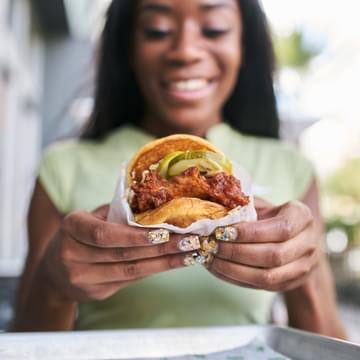
The Client
McDonald's is the world's largest fast food restaurant chain, serving over 69 million customers daily in over 100 countries in more than 40,000 outlets as of 2021.
The Challenge
Industry projections showed global growth in the chicken category for 2021-2026. While McDonald's boasts several iconic chicken menu items, they wanted to understand how to innovate (with chicken) in a way that was consumer relevant and brand relevant.
The Solution
We worked with McDonald's to understand the QSR industry landscape (and how chicken plays a role), assess McDonald's global brand in chicken, and identify the optimal menu offering going forwards.
The Impact
Based on our work together, McDonald's was able to identify short-term innovation opportunities and long-term innovation opportunities. Innovations were prioritized based on their consumer appeal, their fit with the McDonald’s brand and their ability to grow the McDonald’s customer base.
The Client & Challenge
We're all familiar with McDonald's - they serve millions of people across the world every week. And while they have several staples on their menu - items they're well-loved and renowned for - they're always looking for ways to better serve their customers.
Knowing that there is growing opportunity to capture a piece of the chicken market meant that McDonald's needed to understand where to go next with their global menu. They needed a partner to assess the landscape, look specifically at their roster of menu items, and pinpoint where exactly innovation could take them.
Dig Insights and McDonald’s partnered on a multi-phase consumer insight engagement to:
Understand the QSR landscape in chicken
Assess McDonald’s global brand in chicken
Identify the optimal McDonald’s menu that includes chicken innovation
Focusing just on this third stage of identifying the optimal McDonald’s menu that includes chicken innovation, several business questions needed to be addressed:
How do spicy options perform?
How incremental are other chicken items on their menu?
What is the role of the Chicken Big Mac on their menu?
How can they add a premium chicken sandwich to their menu without cannibalizing their current offering?
To answer these questions, the Dig Insights team leaned on our platform, Upsiide. The gamified, intuitive Upsiide consumer interfaces allowed us to test up to 50 in-market menu items and potential new menu items against each other. This revealed key insights such as:
McDonald’s is not primarily thought of as a chicken QSR, but it has several chicken menu items that perform on par with offerings from chicken-focused QSR brands.
Chicken tenders are a popular innovation from McDonald’s, but projected loyalty is weak. This identifies a need to make chicken tenders more unique and compelling (potentially with the addition of unique dips)
Grilled chicken and bone in chicken are a poor fit with the McDonald’s brand
The Chicken Big Mac does not have the broadest appeal, but there is a group of consumers who find it highly compelling. This will help it to break through in market. Moreover, this innovation is incremental vs. the Big Mac, which helps the Chicken Big Mac to drive overall growth for McDonald’s
The Chicken Big Mac was identified as an ideal Limited Time Offer. When tested on Upsiide, the McDonald’s team discovered the innovation idea has a relatively narrow appeal (ie. niche) but a committed group of consumers who are very excited to try it. This commitment will translate into the in-market buzz we want to see with a limited time offer (LTO).
McCrispy was identified as a winning idea that is clearly positioned as a premium chicken sandwich.
The Outcome
The work that Dig Insights carried out allowed the McDonald's team to build out a holistic menu that could flex based on geography and that answered key questions like:
which innovations make the most sense for our brand?
what number of menu items should be offered?
what is the best combination of menu items to maximize reach?
The McCrispy launched as a global permanent menu innovation and is already a multi-billion dollar item. The team walked away with a path forwards to stand out within the QSR chicken space.
Dig has become an invaluable partner across so many aspects of our business – and especially for our global team. We’ve worked with Dig on some of our most pressing and strategic customer problems to solve and they truly partner in finding real, workable solutions that connect insight to strategy. Dig goes beyond giving us the data and even the “why,” they are our partners in the “so what” for our business. We had the opportunity to partner on global menu research that supported a unified, global perspective on our chicken portfolio of products. They were critical partners in helping us craft a compelling story, grounded in data and human truths, to support our recommendations to our Senior Leaders. Dana Grinshpan, Customer Experience Insights Manager McDonald's
Related Posts

The Research Program That Helps Pernod Ricard Launch Breakthrough Innovation
Using the platform, the client has evaluated thousands of ideas across their portfolio of brands in 27 different countries.
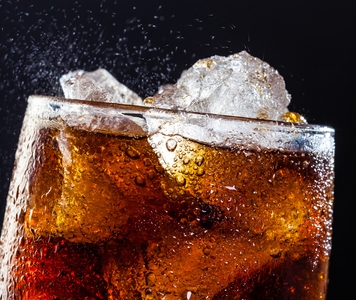
How Coca-Cola Uses Upsiide to Reinvent Early-Stage Innovation
Upsiide, our proprietary research platform, is used as Coca-Cola’s global gate zero testing software. This is one example of the global team using Upsiide.

How We Helped Nestlé Improve Profitability and Focus Their Portfolio
After dominating the Premium Waters space for the past decade, Nestlé wanted to better understand how to serve evolving consumer needs and expectations.

How La-Z-Boy Leaned Into Cultural Relevance to Transform Their Brand
La-Z-Boy worked with Dig's qualitative researchers to develop and refresh their new brand platform, Long Live The Lazy!
- English/Global
- Member Login

The Amadori Case: Supplying McDonalds
This study answers 3 questions:
Does Emotional intelligence affect Individual Performance?
Does Emotional Intelligence affect Organization Engagement?
Does Organizational Engagement impact Organizational Performance?

A three-year study of AMADORI, a supplier of McDonald’s in Europe, assesses links between emotional intelligence, individual performance, organizational engagement, and organizational performance. Emotional intelligence was found to predict 47% of the variation in manager’s performance management scores. Emotional intelligence was also massively correlated with increased organizational engagement with 76% of the variation in engagement predicted by manager EQ. Finally, plants with higher organizational engagement achieved higher bottom-line results building a link between EQ->Engagement->Performance. During this period, employee turnover also dropped by 63%.
Emotional Intelligence Impacts Performance
Of variation in managers' performance scores is predicted by eq, of variation in organizational engagement scores is predicted by eq, is the difference in performance scores between highest and lowest-engagement workplaces, how can emotional intelligence help….

Grow A Manager’s Performance
In this study, the variation in managers’ performance scores was largely predicted by emotional intelligence scores. Learn More

Increase Organization-Wide Engagement
Organizations with high EQ managers are significantly more likely to score high in engagement . Learn More

Create Better Performance
Organizations with high engagement scores and high EQ managers are more productive and have higher employee retention rates. Learn More
“We can certainly say…
that the Six Seconds training proved decisive in pushing managers and middle managers towards improving their leadership skills. Within a few years of using the performance and talent management system, we have witnessed an improvement of the managerial competencies of the whole organization, and especially in those of middle management.”
-Paolo Pampanini, HR Director, AMADORI
1. Does EQ Affect Individual Performance?
To assess this question, two variables were evaluated: EQ scores and Performance scores. EQ scores were measured using Six Seconds’ SEI Assessment. Performance scores were measured using AMADORI’s Performance Management System. The sample was 147 of AMADORI’s managers and middle managers.
The managers in the top 25% of EQ scored higher on the company’s performance management system:
- Highest 25% of EQ
- Lowest 25% of EQ
EQ Scores Predicted 47% of The Variation in Managers’ Performance Results
To assess the power of the relationship between EQ and performance, a linear regression analysis was conducted, revealing a statistically significant positive relationship between the managers‘ EQ scores and their Results scores.

Discussion: EQ & Individual Performance
While many studies correlate emotional intelligence with business performance, this finding is unique because of the strong, significant link between the “hard” outcome of results and the “soft skills” of emotional intelligence. Since we know that emotional intelligence is learnable, this finding suggests that massive individual performance benefits can be reached by developing these skills, and by selecting managers who already exhibit these skills.
It’s also worth noting that unlike many of the other studies of emotional intelligence, this study is looking at an industrial sector. Thus, even in a basic infrastructure industry, it appears that emotional intelligence is a critical success factor.
2. Does EQ Affect Organizational Engagement?
To assess this question, two variables were evaluated: EQ scores and Engagement Index scores. The sample for EQ scores was 147 of AMADORI’s managers and middle managers and the sample for Engagement Index scores was three of AMADORI’s largest production plants.
The plants with the highest EQ managers scored higher on the Organizational Engagement Index:
- Plant with Lowest EQ Manager
- Plant with Mid-EQ Manager
- Plant with Highest EQ Managers
Manager EQ Scores Predicted 76% of Employee Engagement
To assess the power of the relationship between managers’ EQ and organizational engagement, a linear regression analysis was conducted, revealing a statistically significant positive relationship between the managers‘ EQ scores and employee engagement scores.

Discussion: EQ & Organizational Engagement
The managers’ level of emotional intelligence appears to positively influence employee engagement. While this is a small number of plants, the trend is very powerful. In this sample, 76% of the variation in engagement is predicted by variation in manager EQ — suggesting that increasing manager EQ is imperative for organizations concerned with increasing employee engagement.
3. Does Organizational Engagement Impact Organizational Performance?
To assess this question, two variables were evaluated: Organizational Engagement Index scores and Plant Performance scores. The Organizational Vitality Signs assessment was given to AMADORI’s three largest plants to measure engagement, and AMADORI’s own Global Key Performance Indicator assessment was given to each plant to measure Plant Performance.
The Plant with the lowest level of engagement performed the worst:
- Plant with Lowest Engagement
- Plant with Medium-High Engagement
- Plant with Highest Engagement

High Plant Engagement Correlated with Highest Employee Retention Rate
To assess the power of the relationship between organizational engagement and retention rates, a linear regression analysis was conducted, revealing a statistically significant positive relationship between organizational engagement and retention rates.
Discussion: Engagement & Organizational Performance
While the link between engagement and outcomes as measured by the OVS is well established, this study provides an important additional ingredient. The objective performance data from the company’s Key Performance Indicator substantiates the link between employee engagement and performance. Further, this finding adds evidence that the outcomes measure by the Organizational Vital Signs assessment are linked to “real world” performance.
The study provides evidence to affirm the three of the questions:
- Does Emotional intelligence affect Individual Performance? Yes, strongly.
- Does Emotional Intelligence affect Organization Engagement? Yes .
- Does Organizational Engagement impact Organizational Performance? Yes .
There is strong evidence that emotional intelligence is predictive of individual performance; we found that 47% of the variation in performance is predicted by variation in EQ. Plants with more emotionally intelligent managers had higher organizational engagement. Plants with higher organizational engagement reached better performance.
It appears that Emotional Intelligence, as measured by the Six Seconds Emotional Intelligence Assessment, is a significant (perhaps even essential) capacity not only for individuals but also for entire organizations. These findings suggest that emotional intelligence and organizational engagement are key drivers of performance.
63% Reduction in Personnel Turnover
In addition to the results of the study, one striking result was a drastic 63% reduction of personnel turnover of Amadori’s sales force. Sales managers participated in the EQ training, and the competency framework and manager-coach process was extended to the external sales force (300 sales agents all over Italy). The employee turnover rates are shown in this graph:
- 2010 Turnover Rate
- 2011 Turnover Rate
- 2012 Turnover Rate

Recommendations
For other companies considering this type of implementation, there were several “lessons learned” in the Amadori case. The first is the value of metrics. The project started with robust data and the creation of a meaningful performance management system.
Many organizations are moving toward a “balanced scorecard” approach to performance management. It can be a difficult transition when most operations have traditionally only focused on results. Senior leaders need to be very serious if they are going to commit to measure both the “what” and “how.” In this case, we can see that focus is part of the bottom line too. It’s about having a longer-term vision; if we only focus on the short-term, “good results” in one quarter could actually be undermining value. When those results are created in a healthy way, the organization becomes stronger.
These systems are often imperfect, but Pampanini points out that it’s important to have the data and refine. Using tools like SEI and VS provided normative data that is robust and meaningful for individuals as well as the whole organizations.
This “refining” concept is consistent with the best practices of the Change MAP process. The three stages of Engage, Activate, Reflect are presented in a cycle. A multi-year project goes through this cycle many times, continuously building awareness and commitment. As the project progresses, the people involved become more deeply engaged and build the emotional energy that brings others along (shown in the graphic to the right, the feelings on the outer ring become a driving force for continuous improvement as a learning organization).
Finally, Pampanini points to the importance of HR working strategically as a partner to operational leadership: “We believe that HR systems can produce value only if properly executed by the people within the company. This is why investing in the development of emotional intelligence for all key managers is a critical success factor.”
“This is why investing in the development of emotional intelligence for all key managers is a critical success factor.”
This study originally published April 3, 2013, updated Feb 5, 2019
The Authors

Lorenzo Fariselli
Regional Network Director, Six Seconds Italy

Joshua Freedman
CEO, Six Seconds

Massimiliano Ghini
CEO, MGMTLab
In Collaboration with Fabio Barnabè and Erika Paci of Gruppo Amadori
From our clients.
“Probably the best training course I have ever attended in 25 years of business.”
Director , Kwikform
“EQ is crucial for business development and yet in nearly 30 years of working in corporates, I have never had EQ explained, demonstrated and presented in this most engaging fashion. A superb facilitator who shared abundantly. This is truly the BEST program I’ve attended in 20 years.”
MD of Bizcomm & Lecturer , Gibbs Business School
“Emotions are so incredibly valuable and yet discounted so much of the time. This course connects the dots to bring the value proposition of emotions to the workplace.”
HR Training Manager , Cache Creek Casino Resort
Recent Articles

Trust, Diversity & Emotions: Key Strategies from EQ Diversity Practitioner Michael Eatman – Voices from the Network
by Maddalena Campitelli | Jun 26, 2024
Imagine a coaching client struggling with identity, belonging and diversity. How can you use emotional intelligence to help them build trust and overcome self-limiting beliefs to thrive?

Building Burnout Resilience at NHS through EQ Coaching Program
by Michael Miller | Jun 25, 2024
Exhausted healthcare professional says: ‘Genuinely, the best development course I have had the privilege to be part of.’

Emotional Intelligence at Work: The Free, Easy Win Most Managers Are Missing
by Michael Miller | Jun 18, 2024
Gallup study compares the biggest gaps in employee vs. manager perceptions. What are managers’ worst blind spots? What are easy wins they could do better to improve team performance?
Let’s Work Together
Tools for certified members….
Account Login
login, change password
Tools System
manage assessments
cert eLearning & library
Knowledge Base
get how-to info
get tech support

we’re here to help
Plus for everyone…
buy resources
TFA cards app
Event Calendar
quickly find all classes
- Recent Posts
- Building Burnout Resilience at NHS through EQ Coaching Program - June 25, 2024
- Emotional Intelligence at Work: The Free, Easy Win Most Managers Are Missing - June 18, 2024
- Krish and Anabel: SEL Pioneer and Mentee Share 6 Life Lessons on Empathy, Integrity, and Emotional Intelligence - June 3, 2024
Submit a Comment Cancel reply
Your email address will not be published. Required fields are marked *
This site uses Akismet to reduce spam. Learn how your comment data is processed .
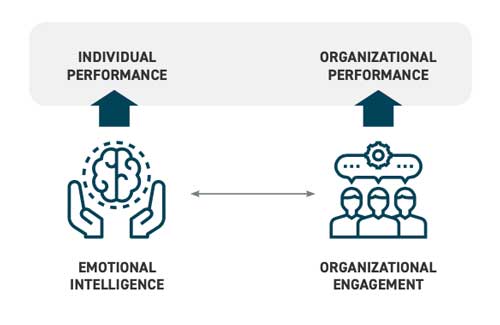
Where should we send your magazine-format PDF of the detailed Amadori case?
"testing testing testing testing"
Not ready to buy your ticket for the EQ community event of the year? No problem! Sign up here and get this inside story on EQCON and all the developments
More From Forbes
Digital transformation is on the menu as mcdonalds innovates to lead the market.
- Share to Facebook
- Share to Twitter
- Share to Linkedin
The fast-food hamburger restaurant chain,McDonald's (Photo Illustration by Budrul Chukrut/SOPA ... [+] Images/LightRocket via Getty Images)
Inflation fears in 2022 have dominated the news cycle, however it is now clear one American fast food company has a fix.
McDondalds (MCD) posted strong third-quarter financial results October 27, thanks to a big investment is digital strategies, and the ability to pass along higher costs to customers.
The business is a rarity. Investors should take note.
Digital may not be top of mind for investors when they think of McDonalds. The Chicago, Ill.-based company is synonymous with its iconic burger and fry combinations. For decades employees have been serving up billions of burgers that looked and tasted exactly the same, regardless where in the world they were purchased and consumed. Scale is still at the heart of the empire, however in 2017 executives began to focus more intensely on steering patrons down a more profitable path.
The future is digital, and self-serve.
Globally McDonalds is making a massive investment in kiosks, mobile applications, and technology for drive-thru customers that changes dynamically. Everything is designed to speed customers through the ordering and payment process. Digital strategies accelerate more sales per hour, and bigger profits.
The strategy is not really that far from McDonalds’ origin story .
Dick and Mac McDonald left New England in the late 1920’s for California. The brothers wanted to make their fortune in the movies, however by 1940 the pair were deep into the drive-in restaurant business. Their Speedee Service System, introduced in 1948 at their San Bernardino store, sped up service by offering customers far fewer choices. It was an instant efficiency revelation. McDondalds began selling its 15-cent hamburgers as fast as they could make them.
Best Travel Insurance Companies
Best covid-19 travel insurance plans.
Today executives are still in search of efficiencies. They determined that the fastest way to bigger profits is to completely avoid the ordering window altogether, by gently encouraging customers to self-serve. This entails in-store kiosks, and the ability to place and pay for orders with the McDonalds smartphone application.
Drive-thru is also a big part of this strategy.
The fast food chain garners 70% of sales in top markets from customers who prefer not to get out of their car. A complicated choice can back up the whole line, and poison profits.
McDonalds acquired Dynamic Yield for $300 million in 2019, an Israeli startup that used artificial intelligence to dynamically change ordering window menus. Choices update based on weather, previous orders, and local trends. Other digital strategies at drive-thru use image recognition to scan license plates to recognize previous customers, or natural language processing algorithms to automate order taking . Together, the initiatives helped shave a full minute off drive-thru times in 2021 within the United States.
All of these strategies were helpful during the pandemic. Since then the changes have been force multipliers. Global inflation is running rampant as supply chain woes ultimately cause higher food, labor and transportation costs. Digital is mitigating these negative factors while leading to greater customer loyalty. And brand allegiance helps McDonalds pass along higher costs to loyal customers.
Chris Kempczinski, chief executive officer, said in October that increased traffic at its U.S. restaurants helped Q3 sales grow by 6.1%, versus a year ago. Worldwide same store sales jumped 9.5% year-over-year, smashing analyst expectations for growth of only 5.8%. The expansion was especially strong in the United Kingdom, Germany, France and Australia. The lone laggard was China, where ongoing covid-19 restrictions hampered sales.
Earnings in Q3 reached $1.98 billion, or $2.68 per share according to documents filed with the Securities and Exchange Commission.
The stock has performed well during 2022, rising by 10%, against a 19.6% decline for the S&P 500. At a share price of $278.40, the stock trades at 26.6x forward earnings, and 8.8x sales. The operating margin is rock solid at 42.5%.
McDonalds may be eons removed from 15-cent burgers in the 1940s, yet its storied legacy of business efficiency is intact. This is more important than ever as inflation plagues the global economy. This is a solid growth story for longer-term investors.
Investing can be intimidating, but it doesn't have to be. Let us be your guide to profitable investing with our Strategic Advantage newsletter . Join us for a $1 trial and see for yourself!
- Editorial Standards
- Reprints & Permissions
Join The Conversation
One Community. Many Voices. Create a free account to share your thoughts.
Forbes Community Guidelines
Our community is about connecting people through open and thoughtful conversations. We want our readers to share their views and exchange ideas and facts in a safe space.
In order to do so, please follow the posting rules in our site's Terms of Service. We've summarized some of those key rules below. Simply put, keep it civil.
Your post will be rejected if we notice that it seems to contain:
- False or intentionally out-of-context or misleading information
- Insults, profanity, incoherent, obscene or inflammatory language or threats of any kind
- Attacks on the identity of other commenters or the article's author
- Content that otherwise violates our site's terms.
User accounts will be blocked if we notice or believe that users are engaged in:
- Continuous attempts to re-post comments that have been previously moderated/rejected
- Racist, sexist, homophobic or other discriminatory comments
- Attempts or tactics that put the site security at risk
- Actions that otherwise violate our site's terms.
So, how can you be a power user?
- Stay on topic and share your insights
- Feel free to be clear and thoughtful to get your point across
- ‘Like’ or ‘Dislike’ to show your point of view.
- Protect your community.
- Use the report tool to alert us when someone breaks the rules.
Thanks for reading our community guidelines. Please read the full list of posting rules found in our site's Terms of Service.

Recommendations of Mcdonalds Case Help
Home >> John A Quelch >> Mcdonalds >> Recommendations
Recommendations of Mcdonalds Case Solution


- About / Contact
- Privacy Policy
- Alphabetical List of Companies
- Business Analysis Topics
McDonald’s Organizational Structure & Its Characteristics
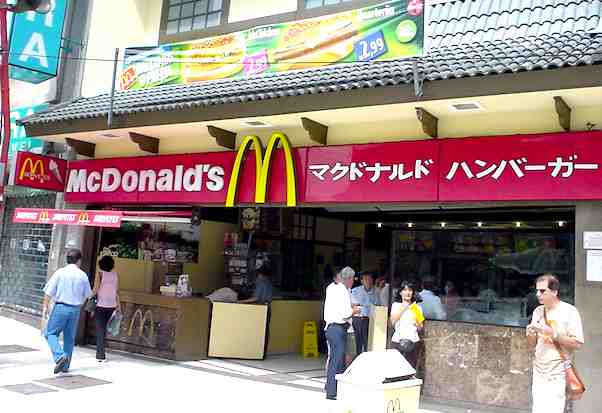
McDonald’s organizational structure (company structure) is designed for effective management and efficient handling of the company’s global operations. The fast-food firm’s organizational or business structure defines the organizational design and system through which organizational components coordinate to achieve business objectives. McDonald’s corporate structure facilitates operations management in food and beverage markets. As the largest fast-food restaurant chain in the world, the company has a structural design that evolves to address current and emerging market issues. The organizational structure supports new product rollouts that satisfy and attract customers despite competition with other fast-food businesses, such as Burger King , Wendy’s , and Subway, as well as McCafé competitors, like Starbucks and Dunkin’. Strategies are implemented through McDonald’s business structure, which can adapt to a changing business environment. The company adjusts its structural components in response to market dynamics and external forces, such as the opportunities and threats explained in the SWOT analysis of McDonald’s Corporation . In this regard, the fast-food company’s organizational structure and its features enable operational effectiveness and fiscal stability.
McDonald’s business structure establishes the arrangement or pattern of interactions among the divisions of the business. Structural characteristics affect the implementation of McDonald’s generic competitive strategy and intensive growth strategies , including strategies for developing products, like hamburger meals, fries, and drinks. Also, McDonald’s marketing mix (4Ps) reflects how the organizational structure provides support for marketing strategies and tactics. Alignment is essential among the company’s organizational structure, business needs, and strategic efforts for competitive advantages in the food service industry. Through its company structure, McDonald’s successfully manages efficiency and performance in the global operations of its fast-food restaurant chain.
McDonald’s Structure Type and Features
McDonald’s has a divisional organizational structure . In this company structure type, the restaurant business is divided into components that are given responsibilities based on operational requirements. Each division handles an operational area and corresponding strategic objectives linked to McDonald’s mission statement and vision statement . One of the aims of the divisional business structure is to support efficiency and growth in different food service markets. McDonald’s organizational structure has the following characteristics, which influence the operations of the fast-food restaurant chain business:
- Global hierarchy
- Business Units
- Function-based groups
Global Hierarchy . McDonald’s Corporation has a global hierarchy for all its operations. This feature of the organizational structure emphasizes corporate control in the context of managerial control, authority, and direction of the restaurant chain. McDonald’s CEO directs and guides the activities of all business areas through this structural characteristic. For example, through the business structure, strategic directives and guidelines for menu innovation are passed down from the office of the CEO at the headquarters to middle managers in the organization, and to the restaurant managers and personnel in company-owned, franchised, and licensed locations. In this context, the structural design facilitates top-down corporate management. McDonald’s operations management accounts for this feature of the company structure, which is typical of many multinational business organizations.
Business Units . The business units of McDonald’s company structure are divisions based on the strategic goal of accelerating business growth and development. Before its reorganization in 2015, McDonald’s organizational structure had geographic divisions (U.S.; Europe; Asia/Pacific; Middle East and Africa; Other Countries). After the reorganization, McDonald’s business structure had performance-based divisions (U.S.; International Lead Markets; High-Growth Markets; Foundational Markets and Corporate). The fast-food company also announced further reorganization in 2023. Today, McDonald’s company structure has the following business units:
- Global Business Services
- McDonald’s USA
- International Operated Markets
- International Developmental Licensed Markets
The Global Business Services (GBS) unit provides support for higher efficiency and collaboration throughout McDonald’s structure. The U.S. market generates the biggest regional sales revenues for the fast-food restaurant chain. Based on this factor, operations in the U.S. market are considered a single division in McDonald’s organizational structure, separate from the rest of the company’s market operations. The other business units are based on franchising/licensing agreements outside the U.S. The International Developmental Licensed Markets unit manages the operations of developmental licensees in opening and developing restaurant locations in local or regional markets. Other international operations are managed under the International Operated Markets unit of McDonald’s company structure. Given the external business environment and market variations involving economic opportunities and related trends enumerated in the PESTLE/PESTEL analysis of McDonald’s Corporation , this organizational structure coordinates and integrates multinational operations through the Global Business Services unit, while the other three units focus on growing the fast-food restaurant chain.
Function-Based Groups . McDonald’s company structure maintains function-based groups or departments. For example, in corporate activities, the company has a People group for human resource management, a Supply Chain group for supply chain management, and a Global Impact team for endeavors that address McDonald’s stakeholders, sustainability, and goals for ESG, corporate social responsibility (CSR), and corporate citizenship . Each function-based group in the restaurant chain’s organizational structure is under the leadership of a corporate executive or senior manager. These groups enable addressing essential business functions, such as human resource management and the reinforcement of McDonald’s organizational culture (company culture) . Thus, this feature of the company structure allows the organizational design to address basic activities in the restaurant business. In addition, groups may be added or changed to respond to business growth and target market trends, as well as the competitive dynamics discussed in the Five Forces analysis of McDonald’s Corporation , which outlines the effects of external factors on the fast-food business organization.
Advantages & Disadvantages of McDonald’s Organizational Structure
An advantage of the hierarchy in McDonald’s business structure is its support for monitoring and control of global operations. The restaurant chain’s size presents managerial challenges, which are addressed through such a hierarchy. Also, the business units of the organizational structure have the advantage of enabling the fast-food company’s implementation of strategies that account for market-focused and related business growth and efficiency indicators. For example, McDonald’s applies a set of strategies for the U.S. market, and a separate set of strategies for developmental licensed markets. In this regard, the corporate structure allows the food service business to succeed in strategic implementations despite issues linked to market diversity and organizational size.
A disadvantage of McDonald’s organizational structure is that it tends to generalize strategies for all markets and locations that belong to the same business unit or division. For example, in International Operated Markets, similar strategies are applied in Germany and Australia, despite the sociocultural differences influencing consumers or diners in these fast-food markets. This business structure issue may limit McDonald’s business flexibility in responding to market-specific variables. Nonetheless, the restaurant company can improve its organizational structure by adjusting how these business units or divisions are used in strategic management decision-making processes.
- Albert, D. (2023). What do you mean by organizational structure? Acknowledging and harmonizing differences and commonalities in three prominent perspectives. Journal of Organization Design , 1-11.
- Alexander, T. (2023). Unwrapping the McDonald’s model: An introduction to dynamic social theory. The Journal of American Culture, 46 (3), 232-241.
- Gonzalez, R. V. D. (2022). Innovative performance of project teams: The role of organizational structure and knowledge-based dynamic capability. Journal of Knowledge Management, 26 (5), 1164-1186.
- McDonald’s Corporation Annual Report – We Are Stronger Than Ever .
- McDonald’s Corporation – Form 10-K .
- McDonald’s Corporation – Where We Operate .
- The McDonald’s Leadership Team .
- Copyright by Panmore Institute - All rights reserved.
- This article may not be reproduced, distributed, or mirrored without written permission from Panmore Institute and its author/s.
- Educators, Researchers, and Students: You are permitted to quote or paraphrase parts of this article (not the entire article) for educational or research purposes, as long as the article is properly cited and referenced together with its URL/link.

IMAGES
VIDEO
COMMENTS
Insights and Recommendations - McDonald's SWOT Analysis. ... Examining the Impact of Sensory Marketing on Young Consumers: A McDonald's Case Study. International Review of Management and Marketing, 13(3), 16. McDonald's Corporation - Food Quality & Sourcing. McDonald's Corporation - Form 10-K.
This article will help you better understand the McDonald's brand and how it operates. 1. Strengths. Strong brand name, image, and reputation: McDonald's has built up huge brand equity. It is the number one fast food company by sales, with over 36,000 restaurants serving burgers and fries in almost 120 countries.
Strong threat of substitutes or substitution. Moderate threat of new entrants or new entry. Recommendations. This Five Forces analysis shows that McDonald's Corporation needs to prioritize the strategic issues related to competition, consumers, and substitutes, all of which exert a strong force on the company and its external environment.
Political Factors Affecting McDonald's Business. This aspect of the PESTEL analysis refers to the effects of governmental actions and policies on the remote or macro-environment of McDonald's business. The PESTLE analysis framework considers governmental intervention as a determinant of the development rate and path of the food-service ...
Ans: McDonald's marketing strategy adopts an emotional approach by marketing Ads that evoke emotions, such as togetherness, joy, and laughter among its target audience. The only aim in evoking such emotions is to show that this brand can deliver an enjoyable experience and make their moments cherishable. Q2.
Recently, McDonald's unveiled a series of changes that will change how the company's restaurants interact with customers for years, designed to integrate digital ordering more fully into the McDonald's ecosystem, increase loyalty through a new rewards program, expand its advantage on drive-thru ordering and double down on delivery. Lucy ...
How can McDonald's cope with the complex and dynamic challenges of its global supply chain? This article from Harvard Business Review offers three lessons from the fast-food giant's experience ...
This case study focuses on different innovative practices embraced by a global fast food joint. McDonald‟s and it s repercussions on the overall brand image of the company. The case study ...
The case is written from the perspective of McDonald's CEO Steve Easterbrook. Easterbrook assumed office in March 2015, and the case highlights the company's recent and dramatic decline in performance amidst increasing competition. In addition, the case details Easterbrook's strategic initiatives in an attempted turnaround of McDonald's' fortunes. With some $25 billion in sales (in 2017) and ...
McDonald's level of risk preparedness, experience in managing health and safety concerns, and supply chain planning all came into play. "Covid-19 became part of everyone's job," said Bill Garrett, senior vice president and head of the U.S. Covid-19 response team at McDonald's. "We pushed ourselves to think differently about many ...
McDonald's: A Case Study in Glocalization. Crawford, Alice; Humphries, Sarah A, PhD; Geddy, Margaret M, PhD. ... McDonald's has been serving fast food to America since 1955 and has grown into one of the world's leading fast food giants. Today, McDonald's is the leading global foodservice retailer with 1.7 million employees and more than 34,000 ...
problem. The RFP seeks a plan of action to help McDonald's understand the problem, recommendations and an action plan for reducing the frequency of "broken" ice cream machines. Case Study Guidelines For the purposes of the business case study, you are a member of a consulting firm that successfully responded to the RFP
McDonald's website. McDonald's the world's leading food service retailer has more than 33,000 restaurants serving nearly 68 million people in more than 119 countries every day. Glocalization, a newer term used to show the localization of corporations globally, is getting popular due to a variety of reasons. The restaurant industry has been
Connecting with community. McDonald's UK & Ireland's sustainability plan, Plan for Change, contains community and people-related commitments under four key pillars: Planet Positive, Great Food, Great Restaurants and People Positive. One commitment states: 'We will help our communities gain new skills and open doors through training, work ...
Weaknesses. While McDonald's is a highly successful and iconic company, it also has some weaknesses, including: Health Concerns: McDonald's has faced criticism for its food's nutritional value and contribution to health problems such as obesity and diabetes.In recent years, the company has made efforts to introduce healthier menu options and reduce the amount of sodium and saturated fat ...
The external environment and its effect on strategic marketing planning: A case study for McDonald's. J. International Business and Entrepreneurship Development, 3 (3/4), 289-307. Theoretical Understanding and Practical Applications of Marketing How Walt Disney Company Attracts Its Customers. Need an custom research paper on McDonald's ...
The Solution. Dig Insights and McDonald's partnered on a multi-phase consumer insight engagement to: Understand the QSR landscape in chicken. Assess McDonald's global brand in chicken. Identify the optimal McDonald's menu that includes chicken innovation. Focusing just on this third stage of identifying the optimal McDonald's menu that ...
McDonald's Operations Management: 10 Critical Decision Areas. 1. In the design of goods and services, the objective is to develop the best product, given the resources and limitations of the fast-food company. In this case, McDonald's aims for high efficiency of service operations, and the standardization of goods.
A three-year study of AMADORI, a supplier of McDonald's in Europe, assesses links between emotional intelligence, individual performance, organizational engagement, and organizational performance. Emotional intelligence was found to predict 47% of the variation in manager's performance management scores.
The stock has performed well during 2022, rising by 10%, against a 19.6% decline for the S&P 500. At a share price of $278.40, the stock trades at 26.6x forward earnings, and 8.8x sales. The ...
However, the firm's corporate social responsibility status is also subject to the influence of other stakeholders. The following are McDonald's main stakeholder groups: Employees. Customers. Investors. Communities. Employees. McDonald's corporate citizenship approach prioritizes employees as its top stakeholder group.
Your customized Mcdonalds case study Recommendations will be composed by a professional writer. Kip down a paper with constant topic research, engaging case angle, real findings, and convincing conclusions. If you value your family and free time, order a custom-made case study now.
McDonald's business structure establishes the arrangement or pattern of interactions among the divisions of the business. Structural characteristics affect the implementation of McDonald's generic competitive strategy and intensive growth strategies, including strategies for developing products, like hamburger meals, fries, and drinks.Also, McDonald's marketing mix (4Ps) reflects how the ...